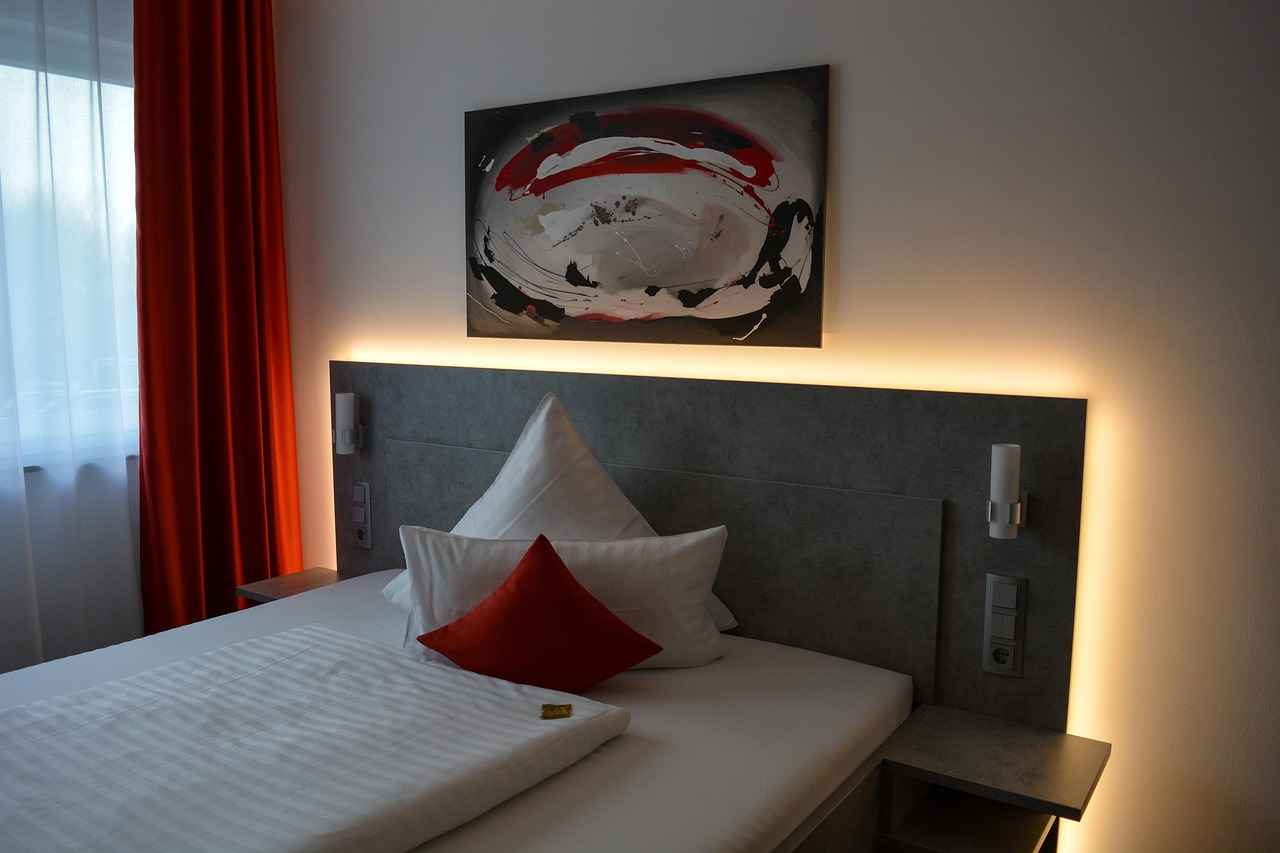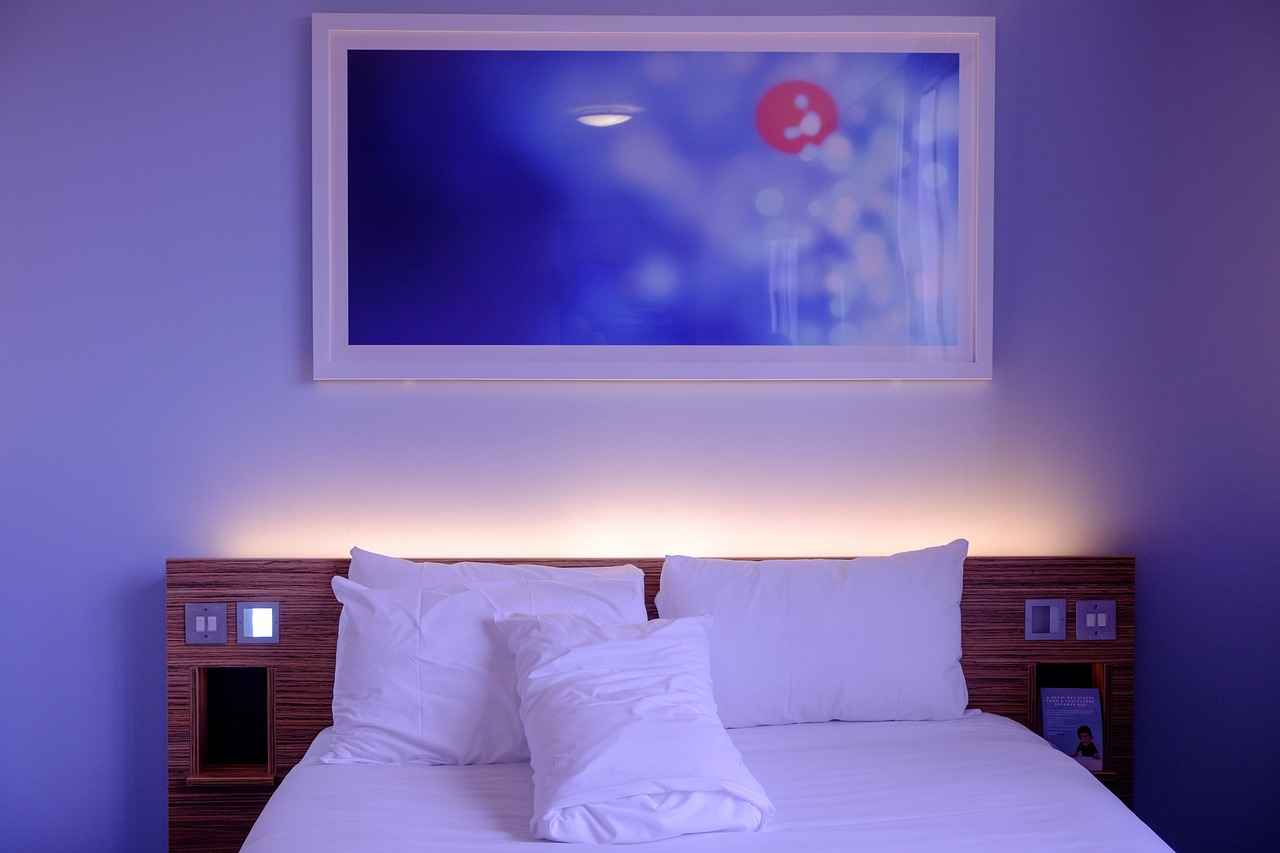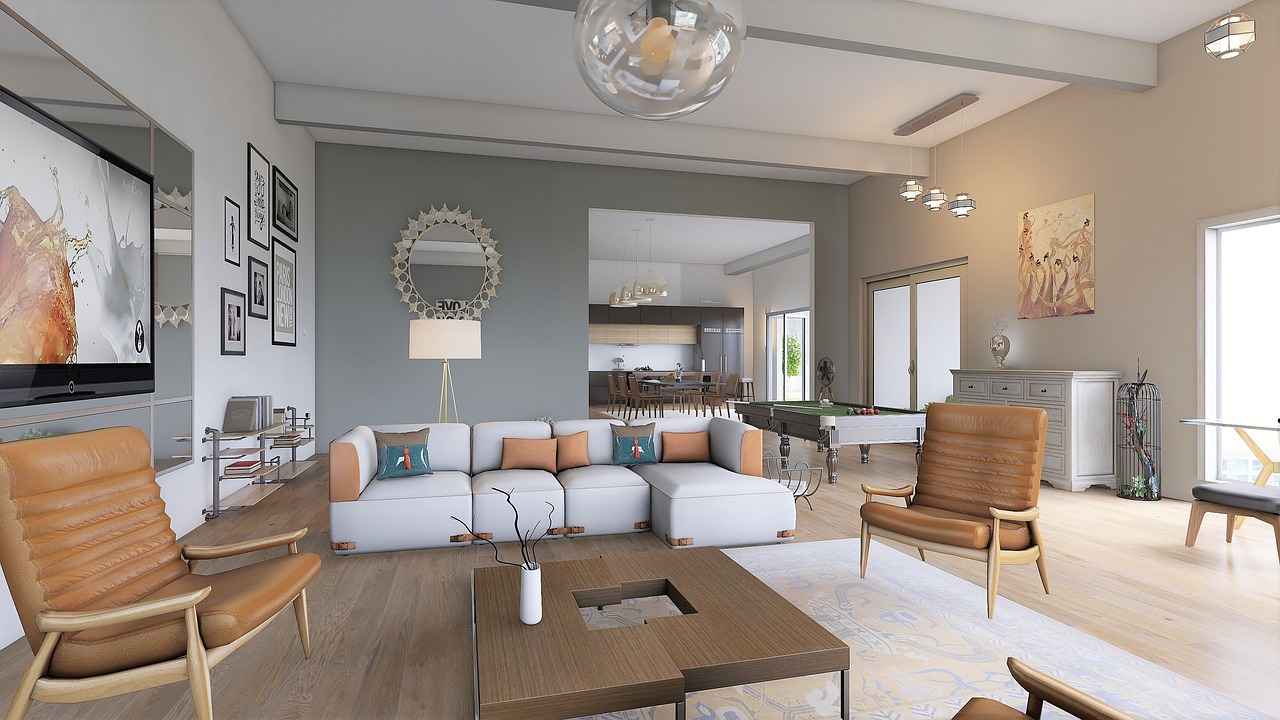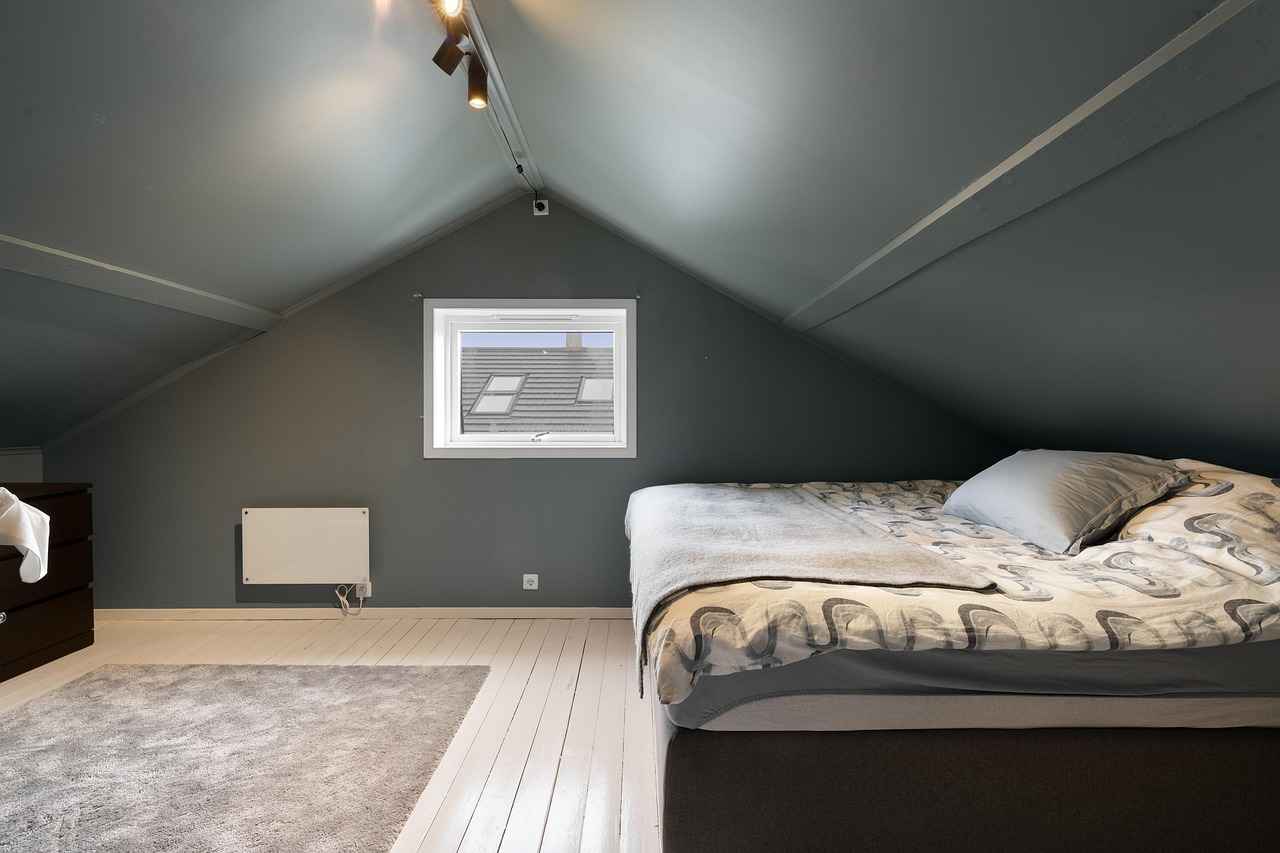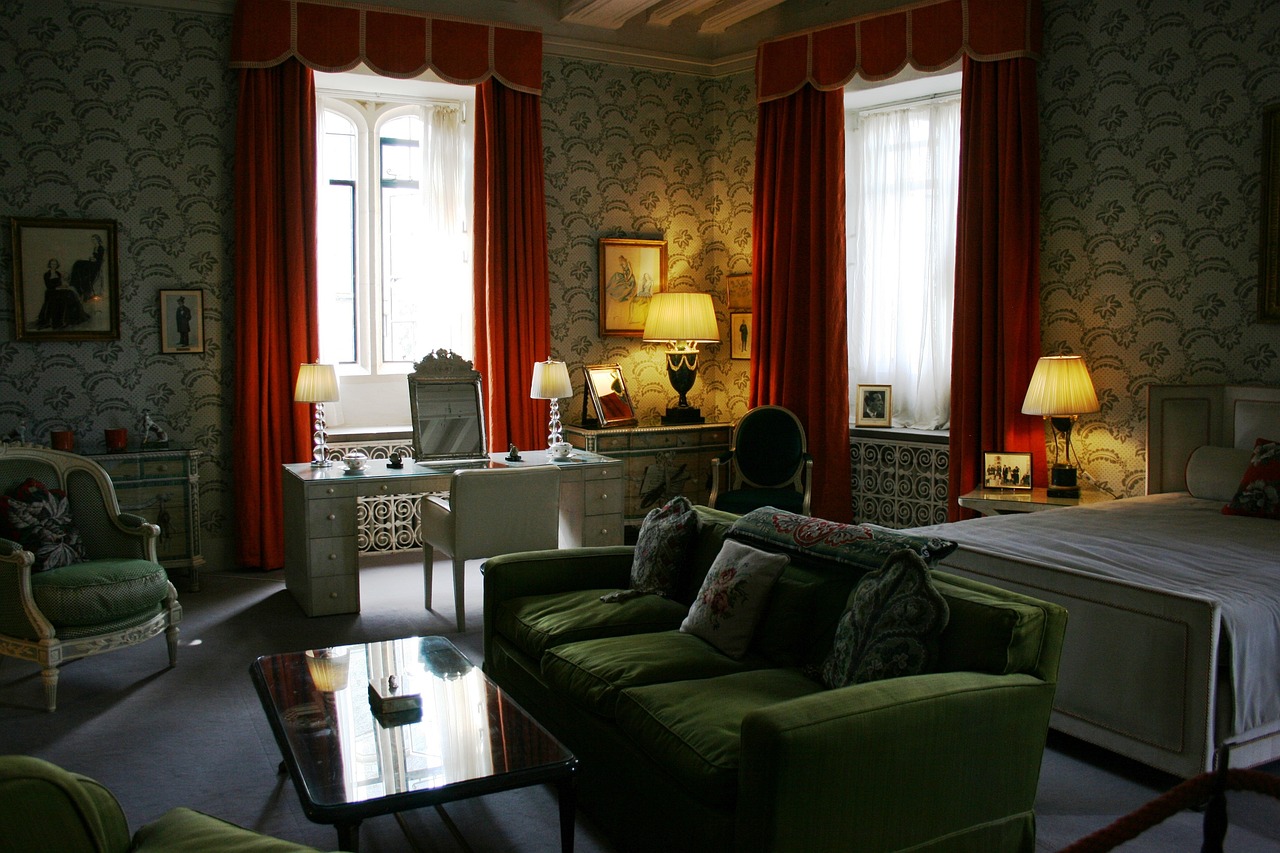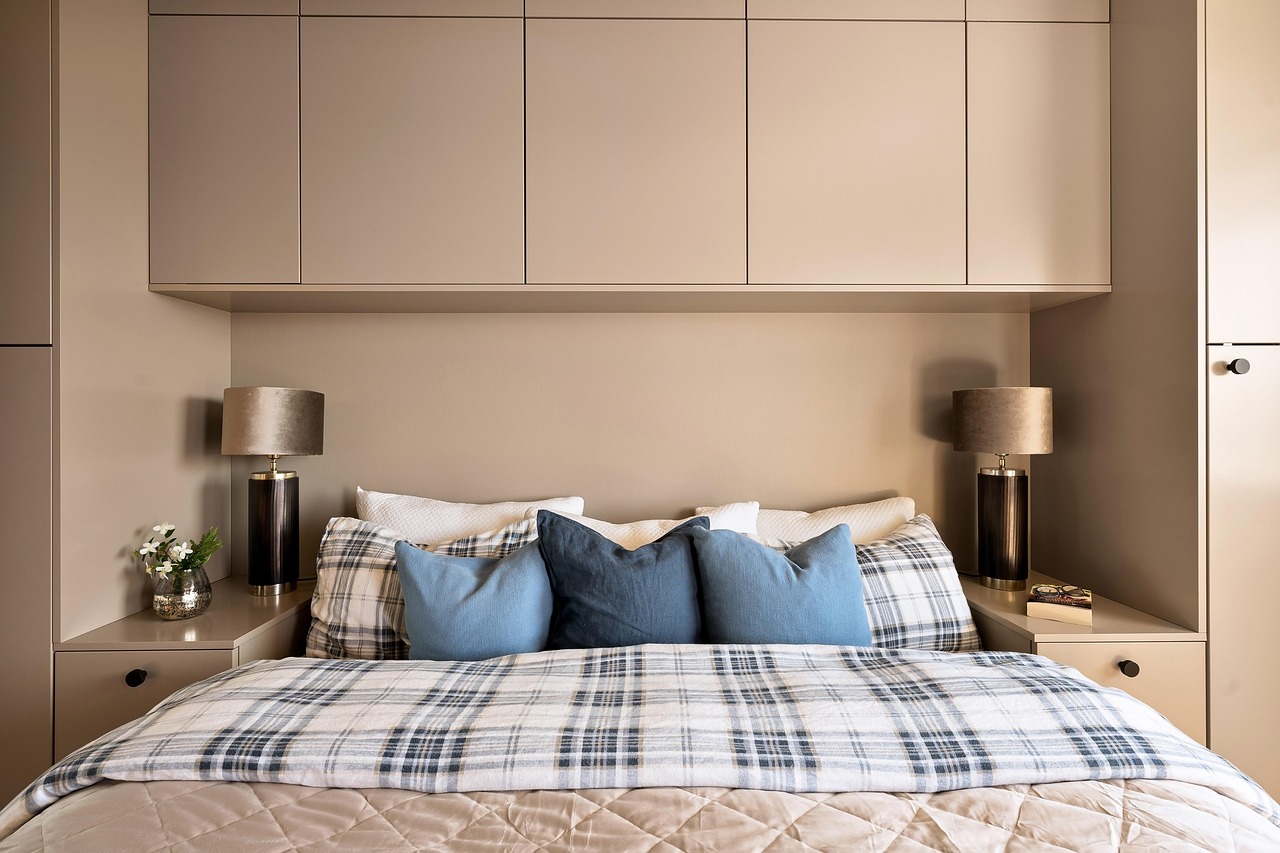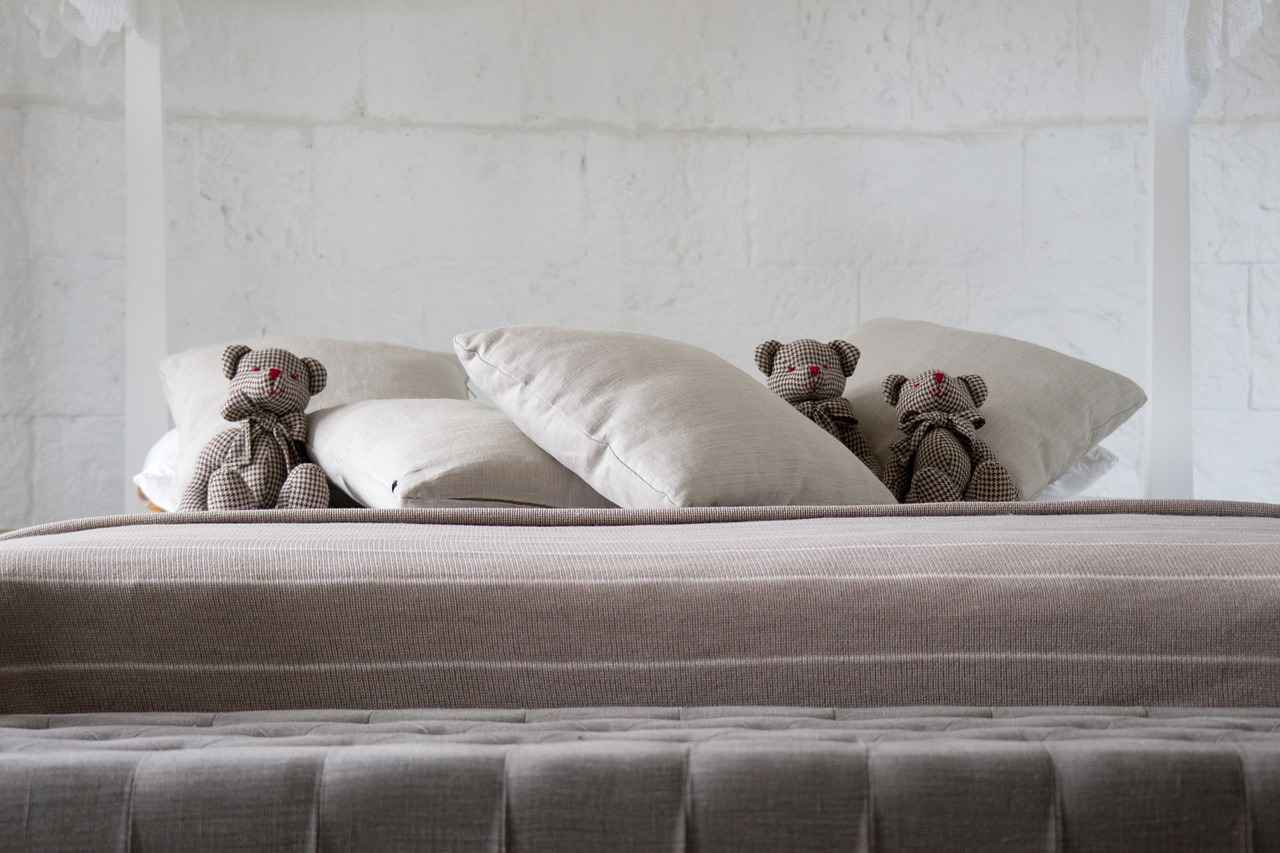Transform your bedroom into a stylish retreat with innovative bed back designs. This article explores a variety of options that not only enhance the aesthetic appeal of modern bedrooms but also provide practical solutions for comfort and functionality. Whether you’re looking for minimalism, luxury, or a touch of nature, there’s a perfect design waiting for you.
- 1. Minimalist Headboards – Emphasizing simplicity, these headboards create a clean and uncluttered look.
- 2. Upholstered Bed Backs – Add a touch of luxury with various fabric options, enhancing comfort and style.
- 3. Wood Panel Backdrops – Bring warmth and texture into your space with different types of wood.
- 4. Floating Shelves as Bed Backs – Combine style and functionality by integrating storage solutions.
- 5. Statement Wall Art – Create a unique focal point with carefully selected artwork.
- 6. Metal Bed Backs – For a modern touch, explore various metal designs and finishes.
- 7. Greenery and Natural Elements – Incorporate plants to enhance tranquility and beauty.
- 8. Customizable Bed Backs – Personalize your space with bespoke designs that reflect your style.
- 9. Sustainable Bed Back Designs – Discover eco-friendly materials and practices.
- 10. Color Psychology in Bed Backs – Use color to create the desired mood in your bedroom.
- 11. Textured Bed Backs – Add depth with various textured materials.
Conclusion: Choosing the right bed back design is crucial for creating a modern bedroom that resonates with your personal taste. Consider functionality, aesthetics, and the overall atmosphere you wish to create.

1. Minimalist Headboards
Minimalist headboards are a popular choice for contemporary bedroom designs, embodying the principles of simplicity and functionality. These headboards focus on clean lines and subtle aesthetics, making them an ideal addition to modern interiors. By opting for a minimalist headboard, you can create a serene atmosphere that promotes relaxation and comfort.
One of the key benefits of minimalist headboards is their ability to enhance the overall aesthetic of your bedroom. They serve as a subtle backdrop that complements other design elements without overwhelming the space. Whether you choose a sleek wooden design or a simple upholstered style, these headboards can effortlessly blend with various decor themes, from Scandinavian to industrial.
In addition to their visual appeal, minimalist headboards offer practical advantages. Many designs provide adequate support for pillows and can be easily cleaned, making them a functional choice for everyday use. Their low-profile nature often makes a room feel more spacious, which is particularly beneficial for smaller bedrooms.
When selecting a minimalist headboard, consider the materials and colors that will best suit your space. Neutral tones like white, gray, or beige can create a calming effect, while natural wood finishes add warmth and texture. Additionally, incorporating geometric shapes or asymmetrical designs can introduce a modern twist to your bedroom.
Ultimately, minimalist headboards are more than just a decorative element; they are a statement of style and functionality. By choosing the right design, you can transform your modern bedroom into a sanctuary of peace and elegance, ensuring a restful retreat at the end of the day.

2. Upholstered Bed Backs
Upholstered bed backs are an excellent way to introduce a sense of luxury and comfort into your bedroom. They not only serve as a stylish focal point but also enhance the overall ambiance of the space. In this section, we will explore various fabric options and design styles that can elevate your bedroom decor.
Choosing the right fabric is essential for achieving the desired look and feel of your bed back. Here are some popular options:
- Velvet: Known for its rich texture and elegance, velvet adds a touch of sophistication to any bedroom.
- Linen: Offering a more relaxed and casual vibe, linen is breathable and perfect for creating a cozy atmosphere.
- Faux Leather: This durable and easy-to-clean option provides a modern aesthetic while mimicking the look of genuine leather.
Upholstered bed backs come in a variety of styles, allowing you to find the perfect match for your personal taste:
- Tufted: This classic style adds depth and texture, often featuring buttons that create a plush look.
- Sleek and Modern: For a contemporary feel, opt for clean lines and minimalistic designs that emphasize simplicity.
- Wingback: This design provides a dramatic flair while offering additional support and comfort.
The color of your upholstered bed back plays a significant role in the overall design of your bedroom. Consider the following tips:
- Choose colors that complement your existing decor to create a harmonious look.
- Experiment with bold hues for a statement piece that draws attention.
- Soft, neutral tones can create a calming environment, perfect for relaxation.
In conclusion, upholstered bed backs are a versatile and stylish addition to any modern bedroom. By carefully selecting the fabric, design style, and color, you can create a stunning focal point that enhances the comfort and elegance of your space.
2.1. Fabric Choices
Choosing the right fabric for upholstered bed backs is essential for both aesthetics and comfort in modern bedrooms. The fabric you select can dramatically influence the overall ambiance of your space. Below, we explore several popular materials, their characteristics, and how they contribute to the room’s vibe.
| Fabric Type | Characteristics | Impact on Room Vibe |
|---|---|---|
| Velvet | Luxurious, soft, and plush | Creates an elegant and cozy atmosphere |
| Linen | Lightweight, breathable, and casual | Offers a relaxed and inviting feel |
| Faux Leather | Durable, easy to clean, and modern | Adds a sleek and contemporary edge |
Velvet is often favored for its rich texture and ability to absorb light, giving the room a warm, inviting glow. It’s perfect for creating a luxurious feel, especially in bedrooms designed for relaxation. On the other hand, linen is known for its natural fibers and breathable qualities, making it ideal for a more casual and laid-back vibe. This fabric can help create a serene environment that promotes restfulness.
Faux leather has gained popularity due to its modern appeal and practicality. It is an excellent choice for those looking to achieve a contemporary look without compromising on durability. Its easy maintenance makes it suitable for high-traffic areas, ensuring your upholstered bed back remains looking fresh.
When selecting the fabric for your upholstered bed back, consider not only the visual impact but also how each material contributes to the overall mood and functionality of your bedroom. By understanding the unique characteristics of each fabric, you can make an informed decision that enhances your space.
2.1.1. Velvet vs. Linen
When it comes to selecting fabrics for upholstered bed backs, velvet and linen are two popular choices that each bring their own unique characteristics to a bedroom design. Understanding the pros and cons of each fabric can help you make an informed decision that aligns with your style and functional needs.
| Fabric | Pros | Cons |
|---|---|---|
| Velvet |
|
|
| Linen |
|
|
In summary, velvet is perfect for those seeking a luxurious and warm atmosphere, while linen offers a more relaxed and breathable option. Consider your lifestyle, maintenance preferences, and the overall aesthetic of your bedroom when making your choice.
2.1.2. Color Considerations
Color considerations are essential in interior design, particularly when it comes to creating a cohesive and inviting atmosphere in your bedroom. The right color palette can significantly influence the mood and perception of your space. Here, we will explore how to select colors that complement your bedroom’s theme and create a harmonious look.
- Understanding Color Psychology: Colors evoke emotions and can affect our moods. For instance, blue is often associated with calmness, while yellow can bring energy and cheerfulness. It’s essential to consider how you want to feel in your bedroom when selecting colors.
- Complementary Colors: Choosing colors that complement each other can create a visually pleasing environment. Use a color wheel to find colors that work well together. For example, pairing a soft gray with a warm yellow can create a balanced and inviting atmosphere.
- Accent Colors: While your main color palette sets the tone, incorporating accent colors can add depth and interest. Consider using bold colors for accessories, such as cushions or artwork, to create focal points without overwhelming the space.
- Neutral Tones: Neutrals like beige, white, or taupe can serve as a base for your bedroom design. They provide versatility and allow you to easily change accent colors as trends evolve.
When selecting colors, consider the lighting in your bedroom. Natural light can alter the appearance of colors throughout the day. Test paint samples in different lighting conditions to ensure they achieve the desired effect.
In conclusion, thoughtful color selection is key to creating a harmonious bedroom. By understanding color psychology, utilizing complementary and accent colors, and considering lighting, you can design a space that is both aesthetically pleasing and reflective of your personal style.
2.2. Design Styles
Upholstered bed backs are a fantastic way to add both style and comfort to your bedroom. These designs come in various styles, catering to diverse tastes and preferences. From tufted to sleek, the options are extensive and can significantly enhance your bedroom’s aesthetic.
When considering upholstered bed backs, one of the first aspects to evaluate is the design style. Here are some popular options:
- Tufted Bed Backs: This classic style features a series of buttons or tucks that create a plush, inviting look. Tufted bed backs are often associated with a luxurious feel and can be found in various fabrics and colors.
- Sleek and Modern: For those who prefer a more contemporary vibe, sleek upholstered bed backs offer a minimalist aesthetic. These designs often feature clean lines and can be upholstered in materials like faux leather or .
- Curved Shapes: Curved bed backs can soften the look of a bedroom. This style often evokes a sense of elegance and can complement both traditional and modern decor.
- Wingback Designs: Wingback bed backs add a dramatic flair to the bedroom. They provide a cozy nook for reading or relaxing and are often upholstered in rich fabrics.
Fabric Choices also play a crucial role in the overall design. Popular options include:
- Velvet: Known for its rich texture and depth, velvet adds a touch of opulence.
- Linen: A more casual fabric, linen provides a laid-back, airy feel.
- Faux Leather: This option combines durability with a modern look, making it easy to maintain.
In conclusion, the variety of upholstered bed backs available allows you to tailor your bedroom to reflect your unique style. Consider your personal taste and the overall theme of your space when making your selection.
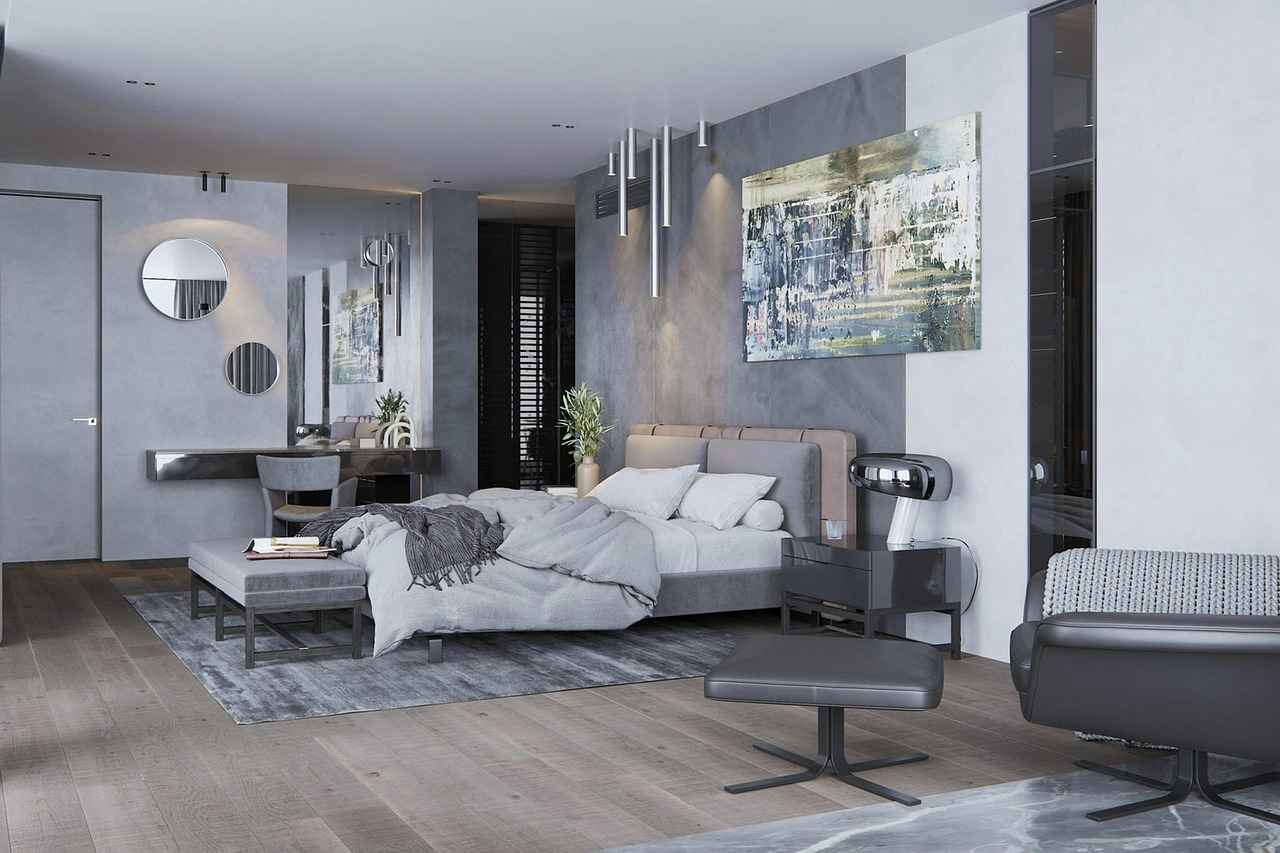
3. Wood Panel Backdrops
Wood panel backdrops are becoming increasingly popular in modern bedroom design, offering a unique way to introduce warmth and texture into your space. These backdrops not only enhance the aesthetic appeal of a room but also contribute to a cozy and inviting atmosphere.
When considering wood panel backdrops, it’s essential to explore different wood types and their finishes. The choice of wood can significantly affect the overall feel of the bedroom. Here are some popular options:
| Wood Type | Characteristics | Best For |
|---|---|---|
| Oak | Durable with a prominent grain | Traditional and rustic designs |
| Walnut | Rich color and smooth texture | Modern and sophisticated looks |
| Reclaimed Wood | Unique history and character | Eco-friendly and vintage styles |
In addition to the wood type, the finishing techniques used can enhance the natural beauty of the wood. Options like staining and varnishing can bring out the grain and color, allowing for customization that matches your bedroom decor. Consider the following:
- Staining: Adds color while preserving the wood’s natural texture.
- Varnishing: Provides a protective layer and enhances shine.
- Natural Finishes: Keep the wood’s original look and feel for a more rustic vibe.
Ultimately, wood panel backdrops serve as a stunning focal point in modern bedrooms, combining functionality with aesthetic appeal. By choosing the right wood type and finish, you can create a space that feels both inviting and stylish.
3.1. Types of Wood
When it comes to designing a bed back, the type of wood you choose can significantly influence the overall aesthetics and feel of your bedroom. Here, we explore several popular wood options that can bring unique characteristics to your bed back design.
- Oak: Known for its durability and beautiful grain patterns, oak is a classic choice for bed backs. Its warm tones can create a cozy atmosphere, and it pairs well with various decor styles, from rustic to modern.
- Walnut: Walnut offers a rich, deep color and a smooth texture, making it an elegant option for a more sophisticated look. This hardwood is often used in high-end furniture, providing a luxurious feel to your bedroom.
- Reclaimed Wood: For those seeking a unique aesthetic, reclaimed wood is an excellent choice. Each piece has its own history and character, adding a touch of rustic charm and sustainability to your design.
- Maple: Maple is a lighter wood that can brighten up your space. Its fine grain and smooth finish make it a versatile option, suitable for contemporary and traditional designs alike.
- Pine: If you’re aiming for a budget-friendly option, pine is an affordable choice that still offers a warm, inviting look. Its light color can be stained or painted to match your desired style.
Each type of wood has its own set of characteristics that can enhance your bed back design. Consider the color, grain, and durability of the wood when making your selection to ensure it complements your overall bedroom decor.
Conclusion: The wood you choose for your bed back can dramatically affect the look and feel of your bedroom. By exploring options like oak, walnut, and reclaimed wood, you can find the perfect material that aligns with your personal style and enhances your space.
3.2. Finishing Techniques
Finishing techniques such as staining and varnishing play a crucial role in enhancing the natural beauty of wood. When it comes to bedroom decor, the right finish can transform your wooden elements from ordinary to extraordinary. This article delves into the various finishing techniques available and how to select the ideal one that complements your bedroom’s style.
Choosing the appropriate finish depends on several factors including the type of wood, the existing color palette, and the overall theme of your bedroom. Below are some popular finishing techniques:
- Staining: This technique involves applying a pigment to the wood to enhance its color and highlight its grain. Stains come in a variety of shades, allowing you to customize the appearance of your wood. For a rustic look, consider using darker stains that bring out the wood’s natural patterns.
- Varnishing: Varnish provides a protective layer over the stained wood, enhancing its durability while adding a glossy finish. This is particularly useful in high-traffic areas or where moisture may be a concern, such as near windows or in humid climates.
- Oil Finishes: Natural oils, like tung or linseed oil, penetrate the wood, providing a rich finish that enhances the grain without forming a surface film. This option is ideal for achieving a more natural look while still protecting the wood.
- Paint: While not a traditional finish, painting can completely change the look of wooden furniture. Choosing a color that aligns with your bedroom decor can create a striking focal point.
When selecting a finish, consider the color scheme of your bedroom. A finish that harmonizes with your existing decor will create a cohesive look. Additionally, think about the texture you want to achieve. A matte finish can give a more understated, modern feel, while a glossy finish adds a touch of elegance.
In conclusion, the right finishing technique can significantly enhance the aesthetic appeal of wood in your bedroom. By understanding the options available and considering your decor style, you can choose a finish that not only protects but also beautifies your space.
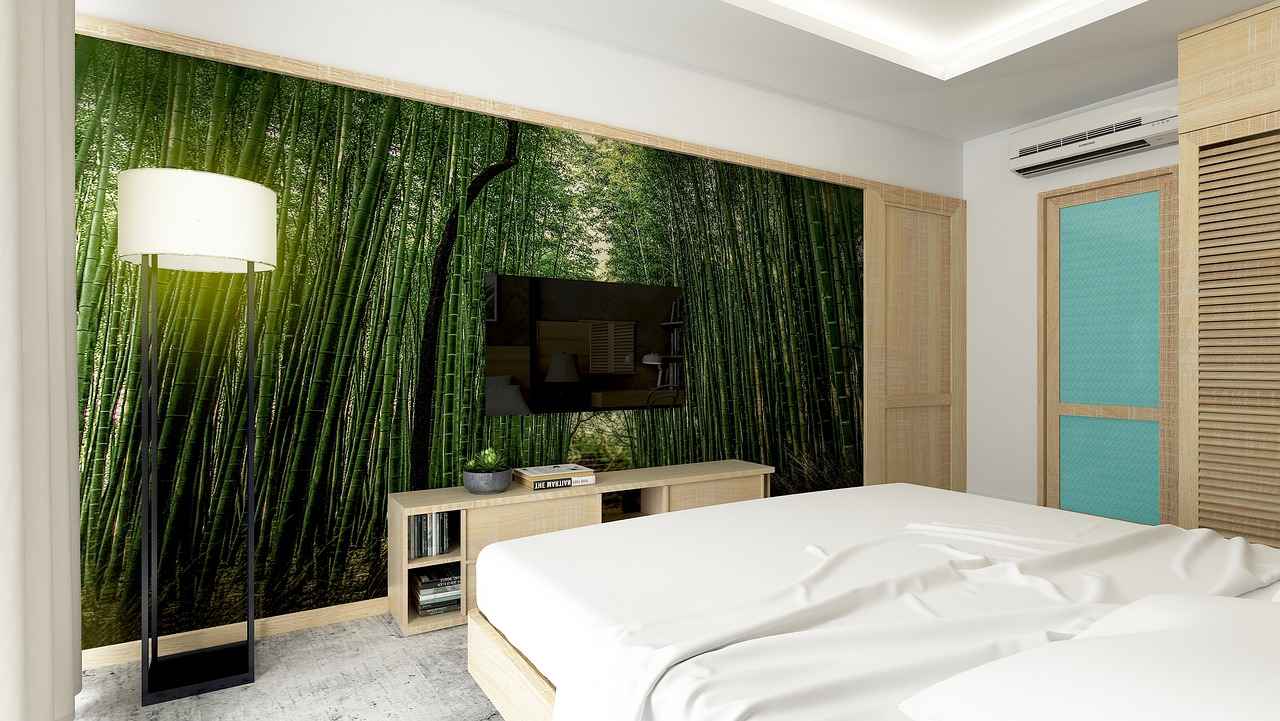
4. Floating Shelves as Bed Backs
Floating shelves have emerged as a popular choice for modern bedroom designs, not only serving as a stylish bed back but also providing functional storage. These versatile shelves can transform the space behind your bed into a practical and aesthetically pleasing area. In this section, we will explore how to effectively integrate floating shelves into your bedroom design.
When it comes to arranging floating shelves behind your bed, the possibilities are endless. Here are some innovative ideas to consider:
- Varying Heights: Create visual interest by installing shelves at different heights. This approach can draw the eye upward, making the room feel larger.
- Asymmetrical Arrangements: An asymmetrical layout can add a modern touch, breaking away from traditional linear designs.
- Layered Shelving: Consider layering shelves to create depth. This can be achieved by placing smaller shelves in front of larger ones.
Personalizing your floating shelves can enhance the overall design of your bedroom. Here are some tips for selecting decorative items:
- Plants: Adding small potted plants can bring a touch of nature indoors and improve air quality.
- Books and Artwork: Showcase your favorite books or artwork to reflect your personality and interests.
- Lighting: Incorporate small LED lights on the shelves to create a cozy ambiance during the evening.
Floating shelves not only serve as a visually appealing backdrop but also offer practical storage solutions. Use them to store items such as:
- Alarm clocks and bedside essentials
- Decorative boxes for hidden storage
- Framed photos and personal mementos
In conclusion, floating shelves can significantly enhance the design of your bedroom while providing essential storage. By creatively arranging these shelves and incorporating personal touches, you can create a unique and functional space that reflects your individual style.
4.1. Design Ideas
Design Ideas for Floating Shelves Behind the Bed
Floating shelves behind the bed can serve as both a functional storage solution and a striking design element in your bedroom. By creatively arranging these shelves, you can establish a unique focal point that enhances the overall aesthetic of your space.
- Varying Heights: Consider installing shelves at different heights to create visual interest. This asymmetrical arrangement draws the eye and adds a dynamic element to your bedroom.
- Layered Layouts: Layer your shelves by placing them in staggered rows. This technique not only maximizes space but also allows for the display of various decorative items, such as books, plants, or art pieces.
- Color Coordination: Use shelves that complement the color scheme of your bedroom. Whether you choose a sleek white finish or a warm wood tone, ensure that the shelves harmonize with your existing decor.
- Integrated Lighting: Add LED strip lights or small sconces above or below the shelves. This will highlight the items on display and create a cozy ambiance in the room.
- Personalized Displays: Use the shelves to showcase personal items like framed photos, travel souvenirs, or cherished collectibles. This not only makes the space feel more inviting but also reflects your personality.
Incorporating floating shelves behind the bed offers a perfect blend of style and practicality. By experimenting with different heights, layouts, and decorative elements, you can create a stunning backdrop that enhances your bedroom’s overall design.
4.2. Decorative Accents
Incorporating decorative items on floating shelves can significantly personalize your living space, making it feel more like home. These shelves not only serve a functional purpose but also provide an opportunity to express your individual style and creativity. Here are some tips on how to choose accessories that reflect your personality and enhance the overall design of your room.
- Choose Meaningful Items: Select decorative pieces that hold personal significance, such as travel souvenirs, family photos, or heirlooms. This adds a sentimental touch to your decor.
- Mix Textures and Materials: Combine various materials like wood, metal, and glass to create visual interest. For instance, pairing a sleek glass vase with a rustic wooden box can create a striking contrast.
- Incorporate Plants: Adding greenery can breathe life into your shelves. Consider low-maintenance plants like succulents or ferns that thrive indoors, enhancing the natural feel of your space.
- Play with Heights: Arrange your items at varying heights to create a dynamic look. Use books or risers to elevate smaller objects, ensuring that the display is visually appealing from all angles.
- Color Coordination: Stick to a cohesive color palette that complements your room’s overall design. This can tie the space together and create a harmonious atmosphere.
- Seasonal Decor: Consider updating your shelves with seasonal items to keep your decor fresh. For example, autumn leaves or holiday-themed decorations can add a festive touch throughout the year.
Conclusion: By thoughtfully selecting and arranging decorative items on floating shelves, you can create a personalized and inviting atmosphere in your home. Remember to have fun with it and let your style shine through!
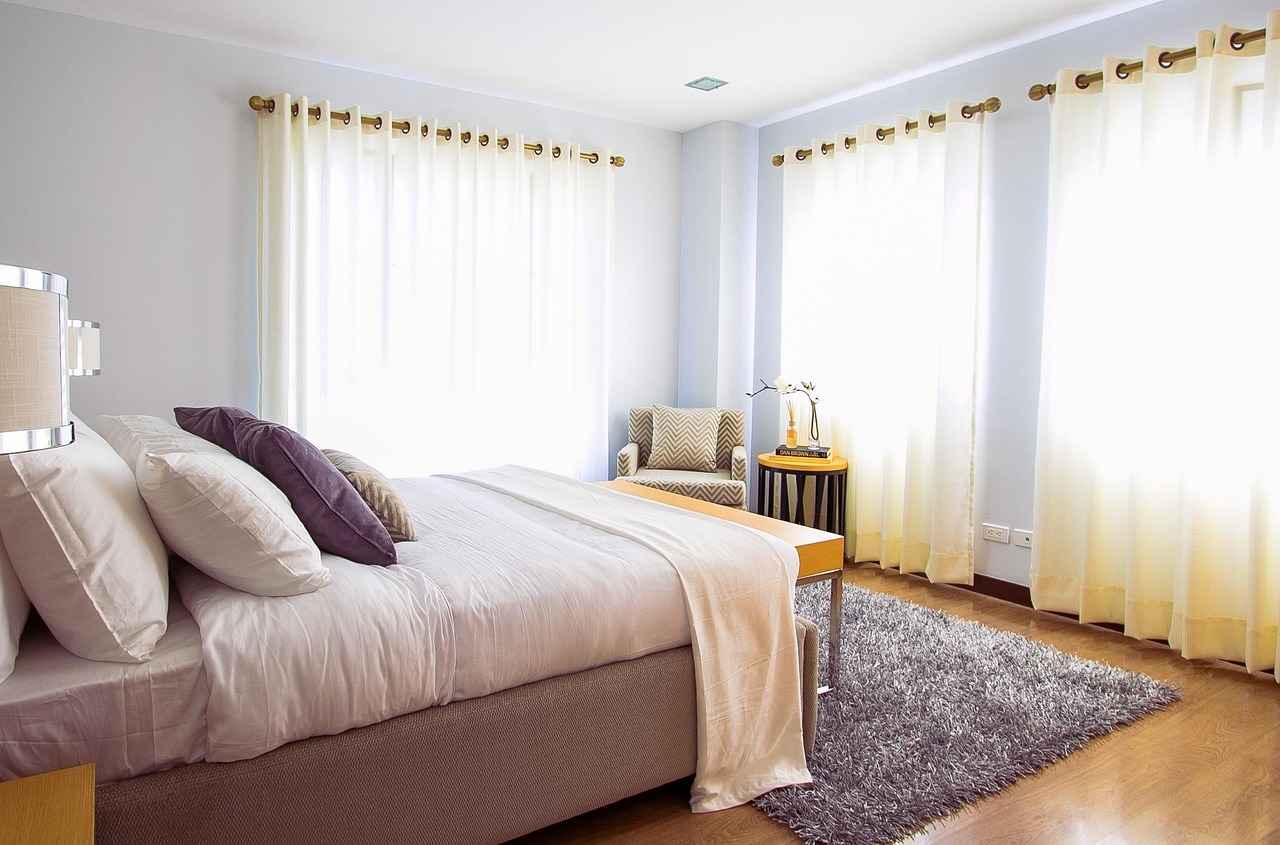
5. Statement Wall Art
Statement Wall Art serves as a captivating bed back design that can transform your bedroom into a personal sanctuary. This approach not only adds a unique focal point to your space but also allows for self-expression through art. In this section, we will explore how to carefully select and arrange artwork that complements your bedroom’s theme and color palette.
- Paintings: Original or print paintings can add depth and personality. Consider works that resonate with you personally.
- Photography: Framed photographs can evoke memories and emotions, making your space feel more intimate.
- Mixed Media: Combining different materials can create a textured and dynamic look.
When selecting artwork for your bed back, consider the color palette of your bedroom. Opt for pieces that either complement or contrast with your existing colors to create visual harmony. For a serene atmosphere, choose soft hues like blues and greens. For a bolder statement, consider vibrant colors that pop against neutral walls.
Arranging your artwork is crucial for achieving a cohesive look. Here are some tips:
- Gallery Wall: Create a gallery wall with a mix of frame sizes and styles for an eclectic feel.
- Symmetrical Arrangement: For a more formal look, arrange pieces symmetrically, ensuring equal spacing between them.
- Focal Point: Choose one larger piece as the focal point and build smaller pieces around it for balance.
The right frames can elevate your artwork. Consider using matching frames for a uniform look or mixing styles for a more casual, artistic vibe. Additionally, consider the height at which you hang your artwork; ideally, it should be at eye level to maximize impact.
In conclusion, using statement wall art as a bed back is an excellent way to personalize your bedroom while creating a stunning visual centerpiece. By carefully selecting and arranging your artwork, you can enhance the overall aesthetic of your space and make a bold style statement.
5.1. Types of Wall Art
Types of Wall Art play a significant role in enhancing the overall aesthetic of your bedroom, particularly when used as a bed back. From paintings to prints, there are various styles to consider that can transform your space and make a bold statement.
- Paintings: Original or replica paintings can add a touch of sophistication and creativity to your bedroom. Consider a large canvas piece that reflects your personality or interests.
- Prints: Art prints offer a more affordable way to enjoy beautiful artwork. They come in various styles, including abstract, landscapes, or even famous art reproductions.
- Photography: Framed photographs can personalize your space. Choose images that evoke memories or inspire you, such as travel photos or portraits of loved ones.
- Wall Murals: For a dramatic effect, wall murals can cover an entire wall, creating an immersive experience. They can depict anything from serene landscapes to vibrant cityscapes.
- Mixed Media Art: Combining different materials and techniques, mixed media art provides a unique texture and depth. This style can include elements like fabric, wood, or metal.
- Gallery Walls: A gallery wall arrangement allows you to display a collection of smaller art pieces. This can create a dynamic and visually interesting backdrop.
When selecting wall art for your bed back, consider the color palette and theme of your bedroom. Art that complements your existing decor can create a cohesive look and enhance the overall ambiance. Additionally, think about the size of the artwork; larger pieces can serve as focal points, while smaller pieces can be grouped for a more eclectic vibe.
In conclusion, wall art not only beautifies your bedroom but also reflects your personal style. By thoughtfully choosing and arranging various types of wall art, you can create an inviting and inspiring space that resonates with you.
5.2. Arranging Art Pieces
Arranging art pieces behind your bed is an essential aspect of creating a visually appealing and cohesive bedroom environment. A well-thought-out display not only enhances the aesthetic of your space but also reflects your personal style. Below are some tips and ideas to help you achieve a balanced and impactful arrangement.
- Consider the Size of Your Art: Start by selecting pieces that are proportionate to your bed and the wall space available. A large piece can serve as a stunning focal point, while smaller pieces can be grouped together to create a gallery wall.
- Choose a Color Palette: Select artworks that share a common color scheme to create harmony. This can be achieved through similar hues or complementary colors that enhance the overall theme of your bedroom.
- Vary the Frame Styles: Mixing different frame styles can add depth and interest to your display. However, ensure that there is a common element—such as color or material—to maintain cohesion.
- Layering Techniques: Consider layering your art pieces for a more dynamic look. Use a larger piece as a backdrop and place smaller artworks in front of it, creating a sense of depth.
- Height Matters: Hang your art at eye level for the best visual impact. If you have a tall headboard, consider placing art slightly higher to maintain balance.
- Incorporate Lighting: Use accent lighting to highlight your art pieces. Wall sconces or picture lights can draw attention to the artwork and create a cozy atmosphere.
Ultimately, the arrangement of art pieces is about expressing your individuality and creating a space where you feel comfortable and inspired. Take your time to experiment with different layouts until you find the perfect configuration that resonates with your taste.
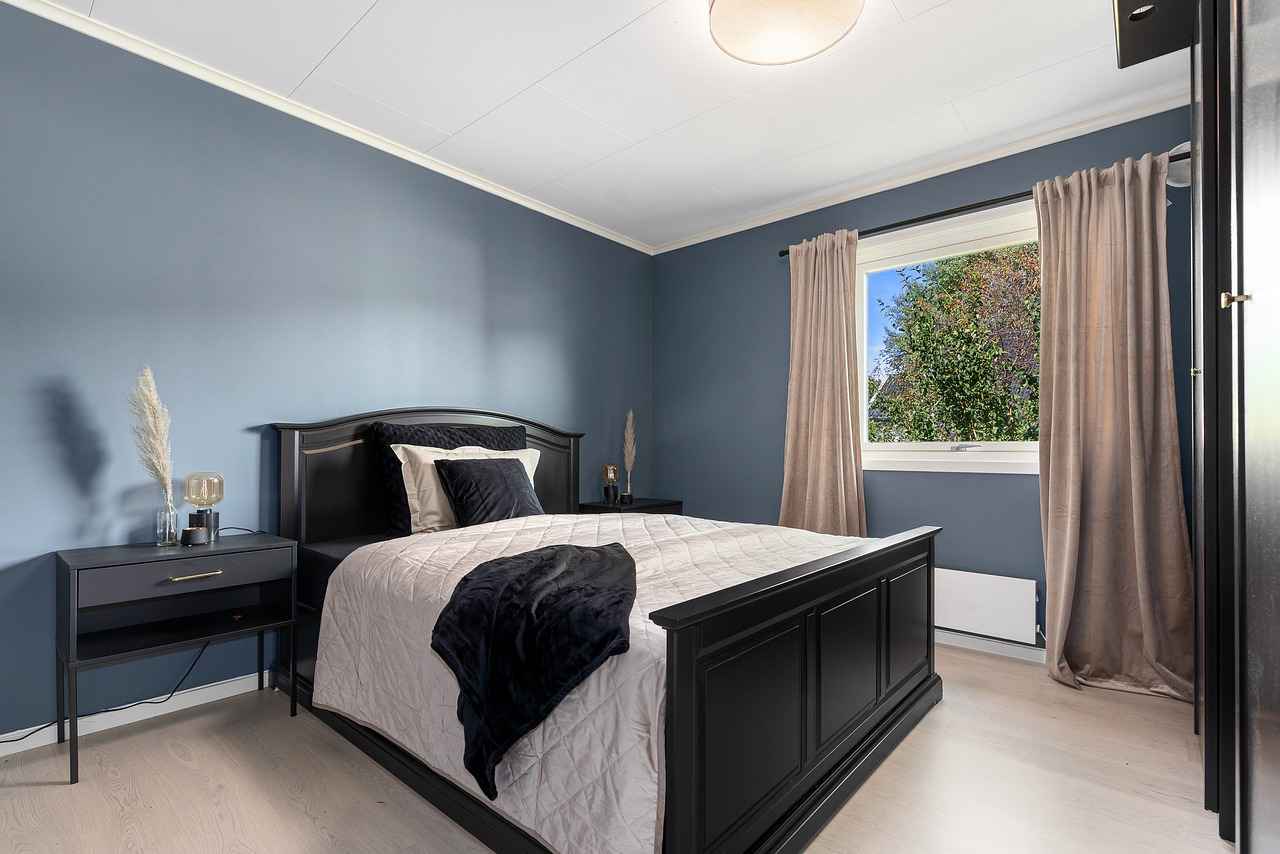
6. Metal Bed Backs
Metal bed backs are an excellent choice for those seeking to infuse a modern and industrial aesthetic into their bedrooms. They not only serve as functional headboards but also as striking design elements that can elevate the overall ambiance of any space.
When considering a metal bed back, various types of metal can be utilized to create distinct looks. Here are some popular options:
- Wrought Iron: Known for its durability and classic appeal, wrought iron adds a touch of elegance and can be intricately designed.
- Aluminum: Lightweight and versatile, aluminum offers a sleek, modern look and is often available in various finishes.
- Steel: For a more robust and industrial feel, steel is an excellent option, often used in minimalist designs.
To create a unique and dynamic look, consider combining metal bed backs with other materials:
- Wood: Pairing metal with wood can soften the industrial edge and add warmth to your bedroom.
- Fabric: Incorporating fabric elements can enhance comfort while maintaining a contemporary style.
Metal bed backs come in various styles that can suit different tastes:
- Geometric Patterns: These designs can add a modern twist to your bedroom, making it visually intriguing.
- Vintage Styles: A vintage metal bed back can evoke nostalgia while still fitting into a modern decor scheme.
- Industrial Chic: Emphasizing raw materials and unfinished looks, this style is perfect for urban dwellings.
The finish of your metal bed back can significantly impact the overall look:
- Matte Finishes: These can create a subtle, understated elegance.
- Glossy Finishes: A shiny surface can make a bold statement and reflect light beautifully.
- Custom Colors: Consider painting your metal bed back to match your bedroom palette for a cohesive look.
In conclusion, metal bed backs are a versatile and stylish choice for modern bedrooms. By exploring various designs, finishes, and material combinations, you can create a stunning focal point that enhances your space’s aesthetic.
6.1. Types of Metal
Types of Metal play a crucial role in modern design, particularly when it comes to creating unique bed back aesthetics. Different metals not only serve functional purposes but also contribute significantly to the overall style and atmosphere of a bedroom. This section explores the characteristics of various metals, including wrought iron and aluminum, highlighting how each can influence your design choices.
| Metal Type | Characteristics | Design Influence |
|---|---|---|
| Wrought Iron | Durable, heavy, and can be intricately designed. | Creates a classic, vintage look that adds elegance. |
| Aluminum | Lightweight, corrosion-resistant, and versatile. | Offers a modern, sleek appearance suitable for contemporary designs. |
| Steel | Strong, durable, and can be finished in various styles. | Conveys an industrial feel, perfect for urban settings. |
| Brass | Warm, golden hue with a vintage charm. | Adds a touch of luxury and sophistication to any space. |
When selecting metals for bed backs, consider how their texture and finish can complement the rest of your decor. For instance, pairing a wrought iron headboard with soft fabrics can create a beautiful contrast, while aluminum can be combined with wood to achieve a modern yet warm atmosphere.
In conclusion, the choice of metal for your bed back is essential in defining the style and mood of your bedroom. By understanding the unique characteristics and design influences of each metal type, you can make informed decisions that reflect your personal taste and enhance your living space.
6.2. Combining Materials
Combining materials in interior design can create visually stunning and dynamic environments, particularly in bedroom spaces. One of the most exciting combinations is the use of metal bed backs paired with wood or fabric. This blend not only enhances the aesthetic appeal but also introduces a unique contrast that can elevate the overall design of your room.
The juxtaposition of metal and wood brings together the warmth of natural elements with the sleekness of industrial materials. For instance, a metal bed frame complemented by a reclaimed wood headboard can create a rustic yet modern look. You can choose from various wood finishes, such as distressed or polished, to match your existing decor.
Incorporating fabric into your bed back design can further soften the look. An upholstered headboard made from rich fabrics like velvet or linen can contrast beautifully with a metal frame. This combination not only adds visual interest but also enhances comfort, making your bed a cozy retreat.
| Material | Advantages | Design Tips |
|---|---|---|
| Metal | Durable, modern, easy to maintain | Pair with warm woods for contrast |
| Wood | Warmth, texture, timeless appeal | Use varying finishes for added depth |
| Fabric | Softness, comfort, variety of colors | Choose fabrics that complement metal finishes |
When blending these materials, consider the color palette of your room. Neutral tones can allow the materials to shine, while bold colors can create a striking focal point. Additionally, integrating accessories such as throw pillows or artwork that incorporates both metals and textiles can unify the design.
In conclusion, the combination of metal with wood or fabric in bed back designs not only enhances the visual appeal of your bedroom but also allows for personalization and creativity. By carefully selecting materials and finishes, you can create a space that reflects your style and provides a harmonious atmosphere.
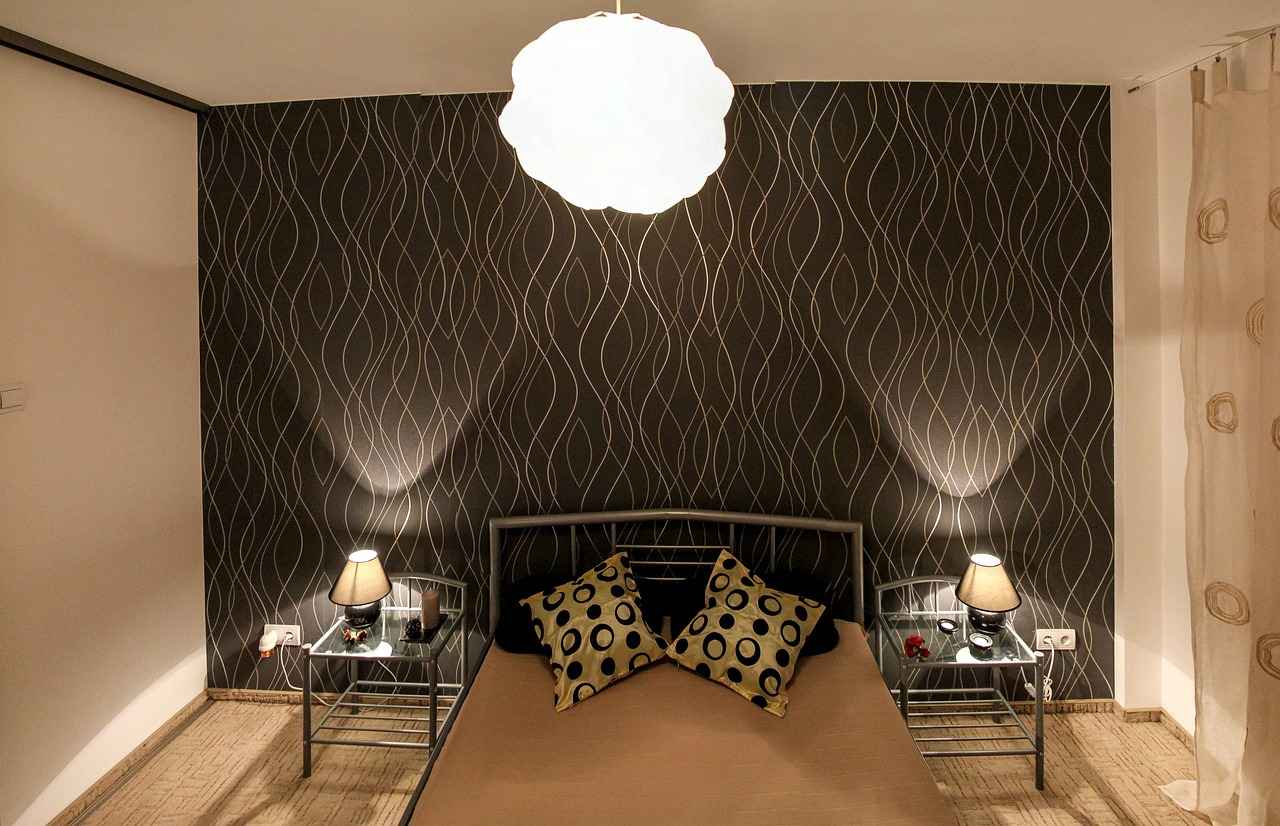
7. Greenery and Natural Elements
Incorporating plants into your bed back design is an excellent way to bring nature indoors. Not only do they add a touch of life and color to your bedroom, but they also promote a sense of tranquility and enhance the overall beauty of the space. In this section, we will explore various ways to integrate greenery into your bedroom design, making it a serene retreat.
- Benefits of Indoor Plants: Indoor plants can improve air quality, reduce stress, and create a calming environment. They also serve as natural decor elements that can complement your bedroom’s aesthetic.
- Choosing the Right Plants: When selecting plants for your bedroom, consider options that thrive in low light, such as snake plants, peace lilies, and pothos. These plants are not only beautiful but also easy to care for.
- Vertical Gardens: A vertical garden can serve as a stunning bed back. This design not only maximizes space but also creates a living wall that adds depth and freshness to your room. You can use wall-mounted planters or trellises to create your vertical garden.
Plant Arrangement Tips: To achieve a cohesive look, consider the following:
- Layering Heights: Use plants of varying heights to create visual interest.
- Color Coordination: Choose plants that complement your bedroom’s color scheme.
- Mixing Textures: Combine different leaf shapes and textures for a dynamic display.
Incorporating greenery into your bedroom not only enhances its beauty but also contributes to a healthier living environment. By carefully selecting plants and arranging them thoughtfully, you can create a peaceful sanctuary that reflects your personal style.
7.1. Plant Choices
When it comes to selecting plants for your bedroom, it’s essential to choose varieties that not only thrive in low light conditions but also contribute to better air quality. Here, we explore some of the best options that can enhance your bedroom environment.
- Snake Plant (Sansevieria) – Known for its resilience, the snake plant is a popular choice for bedrooms. It can survive in low light and only needs watering every few weeks. Plus, it converts CO2 into oxygen at night, making it ideal for sleep.
- Pothos (Epipremnum aureum) – This trailing plant is not only visually appealing but also an excellent air purifier. Pothos can thrive in various light conditions and requires minimal care, making it perfect for busy lifestyles.
- Peace Lily (Spathiphyllum) – The peace lily is renowned for its beautiful white blooms and air-purifying qualities. It flourishes in low light and only needs to be watered when the soil feels dry.
- Spider Plant (Chlorophytum comosum) – Easy to grow and maintain, the spider plant is another great option for bedrooms. It can tolerate low light and is known for its ability to remove indoor pollutants.
- ZZ Plant (Zamioculcas zamiifolia) – The ZZ plant is incredibly hardy and can survive in low light and drought conditions. Its glossy leaves add a touch of elegance to your bedroom decor.
Incorporating these plants into your bedroom not only enhances the aesthetic appeal but also contributes to a healthier indoor environment. By choosing the right plants, you can create a serene and inviting space that promotes relaxation and well-being.
Remember to consider factors such as the size of the plant and its growth habits when selecting the right options for your bedroom. With the right choices, you can enjoy the benefits of greenery without compromising on style.
7.2. Vertical Gardens
Vertical gardens are becoming increasingly popular as a unique and innovative way to enhance interior spaces, especially as stunning bed backs in modern bedrooms. These living walls not only add a touch of nature but also create a refreshing ambiance that can transform the overall aesthetic of your room.
Creating a vertical garden involves several key steps:
- Choose the Right Location: Identify a wall behind your bed that receives adequate light. If natural light is limited, consider using grow lights to ensure your plants thrive.
- Select Suitable Plants: Opt for plants that are well-suited for vertical gardening. Some excellent choices include ferns, ivy, and succulents, which require varying levels of care and light.
- Design Your Layout: Plan the arrangement of your plants. Consider using a mix of heights and textures to create visual interest. A staggered pattern often works well.
- Install the Structure: Use wall-mounted pockets, grids, or frames to support your plants. Ensure that the structure is sturdy enough to hold the weight of the soil and plants.
- Maintain Your Garden: Regularly water and prune your plants to keep them healthy. Implement a fertilization schedule to promote growth and vibrancy.
Incorporating a vertical garden as a bed back not only serves as a focal point but also provides numerous benefits. These include improved air quality, enhanced mood, and a sense of tranquility. The lush greenery can create a calming effect, making your bedroom a perfect retreat.
To successfully integrate a vertical garden into your bedroom design, consider the overall theme and color palette of the room. Matching plant colors with your decor can create a cohesive and harmonious look.
In conclusion, a vertical garden can be a stunning and functional addition to your bedroom. With thoughtful planning and care, you can create a living wall that adds depth, freshness, and a vibrant touch of nature to your space.
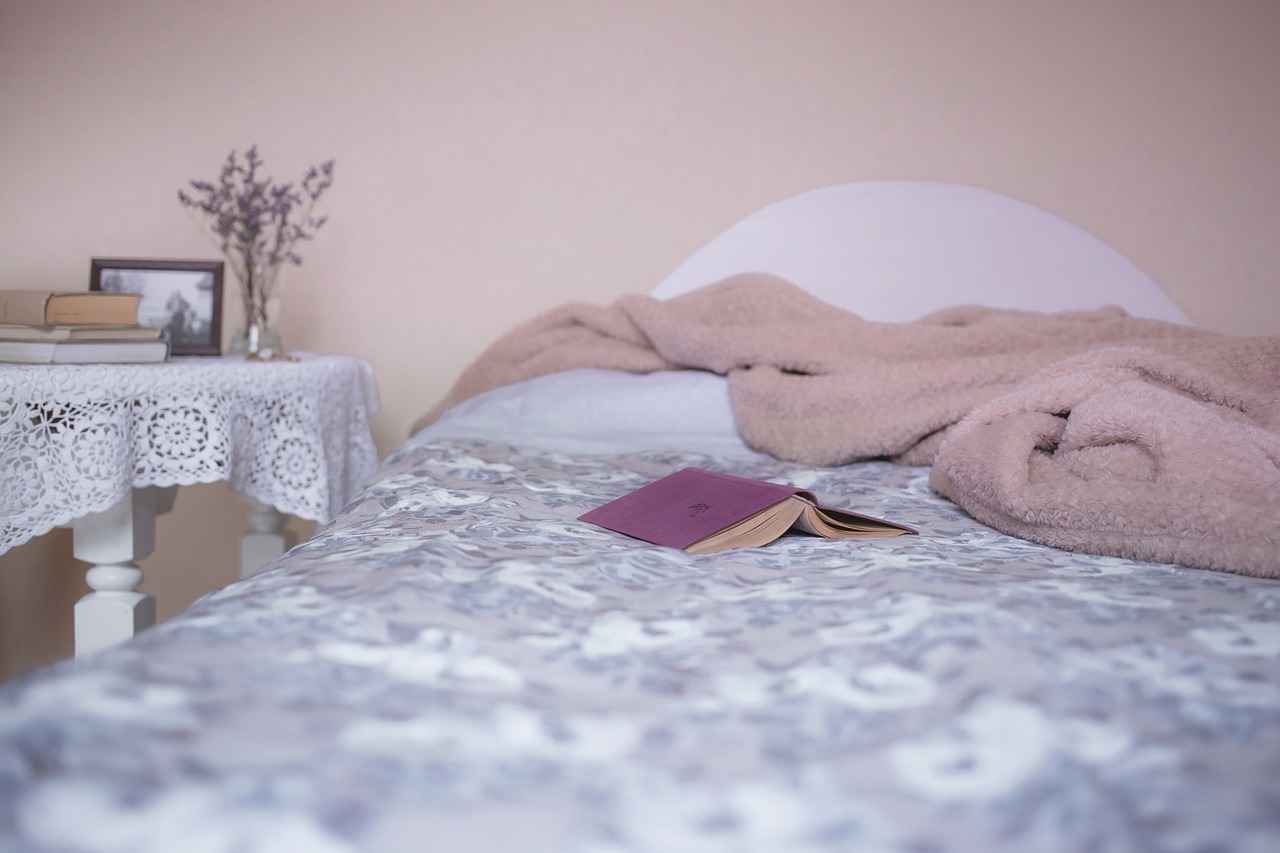
8. Customizable Bed Backs
Customizable bed backs are becoming increasingly popular in modern bedroom design, offering a unique opportunity for personalization and creativity. These bespoke designs allow homeowners to express their individual style and preferences, making their sleeping space truly their own. With a wide array of materials, colors, and styles available, the possibilities are virtually endless.
When considering a customizable bed back, it’s essential to explore various options that can reflect your personality. Here are some ideas to inspire your design journey:
- Fabric Choices: Opt for luxurious fabrics such as velvet or linen that can be tailored to your taste. Each fabric brings a different texture and vibe to your bedroom.
- Color Palette: Choose colors that resonate with your style. Whether you prefer calming neutrals or bold statements, the right color can transform the atmosphere of your space.
- Unique Shapes: Consider unconventional shapes or designs that stand out. A geometric pattern or an asymmetrical design can serve as a stunning focal point.
- Integrated Lighting: Incorporate LED lighting into your bed back design for added ambiance. This can create a warm, inviting glow that enhances the overall aesthetic.
Working with a designer can help bring your vision to life. Collaboration is key to ensuring your bed back not only looks good but also fits seamlessly with the rest of your bedroom decor. Discuss your ideas openly and be receptive to their professional insights.
Budget considerations are also crucial. Custom designs can vary widely in cost, depending on materials and complexity. It’s important to set a realistic budget and understand the factors that influence pricing. This way, you can achieve the bed back of your dreams without overspending.
In conclusion, customizable bed backs offer a fantastic way to enhance your bedroom with a touch of personal flair. By considering your style, collaborating with designers, and keeping budgetary constraints in mind, you can create a unique and inviting space that reflects who you are.
8.1. Working with Designers
Collaborating with designers can significantly enhance the process of bringing your vision for a tailored bed back design to life. Effective communication is vital to ensure that your ideas are understood and translated into a beautiful and functional design. Here are some practical tips to help you work seamlessly with designers.
- Define Your Vision: Before meeting with a designer, take time to clarify your vision. Consider the style, color palette, and materials you prefer. This will help you communicate your ideas more effectively.
- Gather Inspiration: Create a mood board or collect images that resonate with your desired design. This can include photos of bed backs, color swatches, and fabric samples. Visual aids can help convey your ideas more clearly.
- Be Open to Suggestions: While it’s important to express your vision, be open to the designer’s expertise. They may offer innovative ideas or solutions that you hadn’t considered, enhancing your original concept.
- Discuss Functionality: A bed back design should not only be aesthetically pleasing but also functional. Discuss how you plan to use the space and any specific needs you have, such as storage or comfort.
- Set a Budget: Be upfront about your budget. This helps designers tailor their suggestions to your financial constraints while still aiming to achieve your desired look.
- Request Mockups: Ask for sketches or digital mockups of the proposed designs. This visual representation can help you understand how your ideas will come together and allow for adjustments before the final implementation.
- Maintain Open Communication: Throughout the design process, keep the lines of communication open. Regular check-ins can help ensure that the project stays on track and aligns with your vision.
By following these guidelines, you can foster a productive partnership with your designer, resulting in a stunning bed back design that reflects your personal style. Remember, a well-executed design not only enhances the beauty of your bedroom but also contributes to a more comfortable and inviting atmosphere.
8.2. Budget Considerations
Budgeting for Custom Bed Backs is essential for anyone looking to enhance their bedroom with a personalized touch. Custom designs can vary significantly in cost, depending on various factors that influence pricing. Understanding these factors will help you budget effectively for your ideal bed back.
When considering a custom bed back design, there are several key elements that can impact the overall cost:
- Materials Used: The choice of materials is one of the most significant factors affecting the price. High-quality fabrics like velvet or sustainable woods can be more expensive than standard options.
- Design Complexity: Simple designs are generally more affordable, while intricate patterns or custom shapes may require more labor and resources, increasing the cost.
- Size and Dimensions: The size of the bed back also plays a role. Larger installations will naturally require more materials and time, leading to higher costs.
- Labor Costs: Hiring skilled craftsmen or designers can add to your budget. It’s worth investing in professionals who can ensure a high-quality finish.
- Customization Level: Fully bespoke designs tailored to your specifications will usually cost more than semi-custom options that offer limited choices.
To effectively budget for your custom bed back, consider the following steps:
- Research and Compare: Look into different materials and designs to understand the price ranges.
- Set a Budget: Determine how much you are willing to spend and prioritize features that matter most to you.
- Consult with Professionals: Get quotes from various designers and craftsmen to find the best fit for your budget.
- Plan for Additional Costs: Always account for potential additional expenses, such as delivery, installation, or finishing touches.
By understanding these factors and following a structured approach, you can create a beautiful and personalized bed back that fits your style and budget.
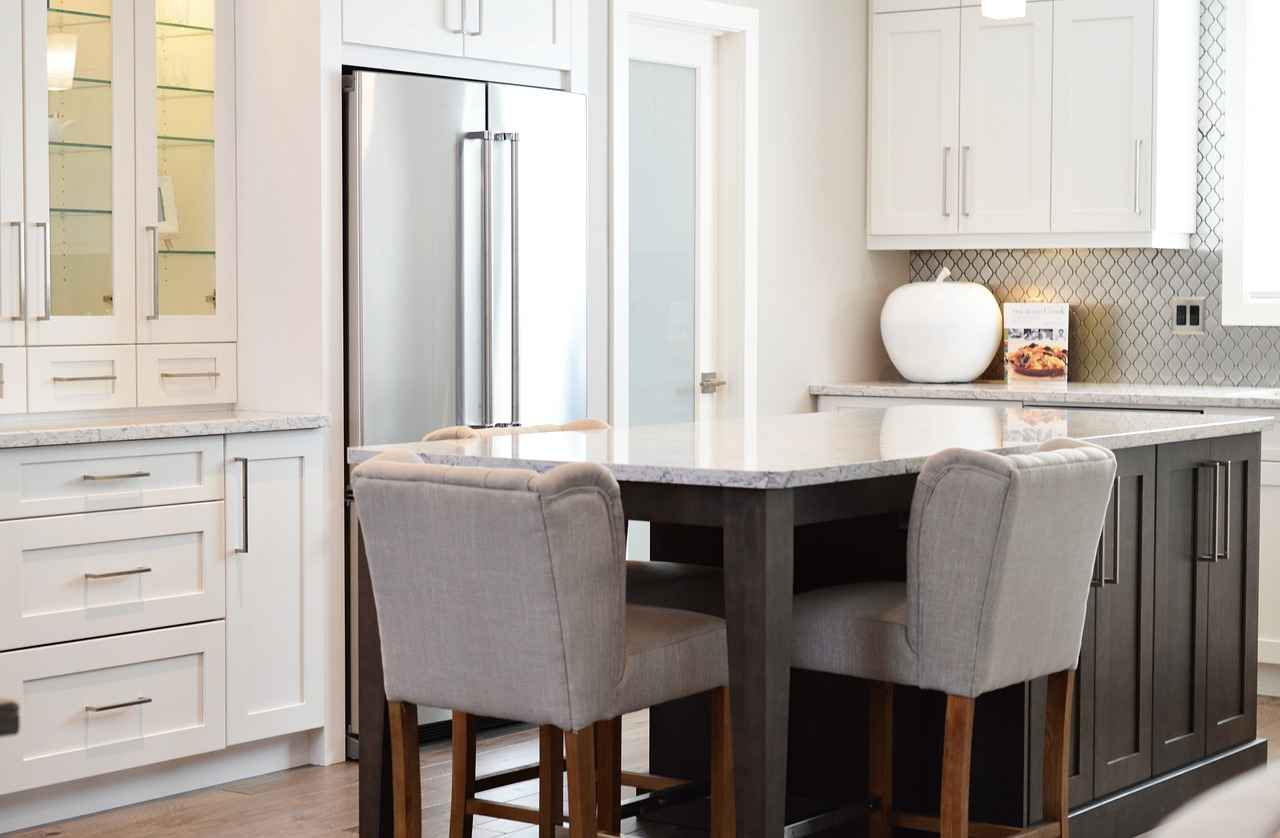
9. Sustainable Bed Back Designs
Sustainable Bed Back Designs are becoming increasingly popular as homeowners seek to create environmentally friendly spaces. This section will explore eco-friendly materials and practices that can be seamlessly integrated into your bed back design, ensuring that your bedroom is not only stylish but also sustainable.
- Recycled Materials: Incorporating recycled materials into your bed back design can significantly reduce your carbon footprint. For instance, reclaimed wood can add a rustic charm while also being eco-conscious. You can use old pallets or barn wood to create a unique headboard that tells a story.
- Eco-Friendly Fabrics: When selecting upholstery for your bed back, consider fabrics made from organic cotton, hemp, or bamboo. These materials are not only sustainable but also free from harmful chemicals, making them safe for you and the environment.
- Low VOC Paints: If you plan to paint your bed back, opt for low VOC (volatile organic compounds) paints. These paints are less harmful to indoor air quality and are available in a wide range of colors, allowing you to maintain aesthetic appeal without compromising sustainability.
- Natural Finishes: Instead of synthetic finishes, choose natural oils or waxes to treat wooden bed backs. These options enhance the wood’s natural beauty while being environmentally friendly.
- Local Sourcing: Whenever possible, source your materials locally. This reduces transportation emissions and supports local artisans and businesses, contributing to the sustainability of your community.
Incorporating these sustainable practices into your bed back design not only elevates the aesthetic of your bedroom but also contributes to a healthier planet. By making conscious choices, you can create a space that reflects your values and commitment to sustainability.
Conclusion: Embracing sustainable bed back designs is a step towards a more eco-friendly lifestyle. By utilizing recycled materials, eco-friendly fabrics, and local resources, you can create a beautiful and responsible bedroom that aligns with modern design trends.
9.1. Recycled Materials
In today’s world, where sustainability is becoming increasingly important, using recycled materials in design is not just a trend but a necessity. Incorporating these materials not only adds character to your space but also significantly reduces your environmental impact. This section explores innovative ways to integrate recycled materials into your design, ensuring both functionality and aesthetics.
- Furniture Made from Reclaimed Wood: Reclaimed wood is a popular choice for creating unique furniture pieces. Each plank tells a story, adding character and warmth to your decor. Consider using reclaimed wood for bed frames, shelves, or even headboards.
- Textiles from Recycled Fabrics: Fabrics made from recycled materials, such as PET bottles, offer a sustainable alternative for upholstery and curtains. These textiles come in various colors and patterns, allowing for creative expression while being eco-friendly.
- Decorative Elements: Items like picture frames, vases, and wall art can be crafted from recycled materials. For instance, using old glass bottles as vases or turning scrap metal into sculptures can add unique focal points to your design.
- Eco-Friendly Paints: When it comes to painting, opt for paints made from recycled materials. These paints not only reduce waste but also emit fewer volatile organic compounds (VOCs), contributing to a healthier indoor environment.
By incorporating recycled materials into your design, you not only create a visually appealing space but also contribute to a more sustainable future. This approach encourages creativity and innovation, allowing you to craft a home that reflects your values and style.
In conclusion, embracing recycled materials in your design is a powerful way to make a positive impact on the environment while enhancing the character of your living space. With a variety of options available, the possibilities for creativity are endless.
9.2. Eco-Friendly Fabrics
Eco-Friendly Fabrics are becoming increasingly essential in the realm of sustainable design, particularly for bed back upholstery. As consumers become more conscious of their environmental impact, the demand for eco-friendly materials has surged. This section explores some of the best options available to create a stylish yet sustainable bedroom.
One of the most popular choices is organic cotton. Grown without synthetic fertilizers or pesticides, organic cotton is not only better for the environment but also softer and more breathable than conventional cotton. This makes it an excellent choice for bed backs, providing both comfort and sustainability.
Another fantastic option is bamboo fabric. Bamboo is a rapidly renewable resource that requires minimal water and no pesticides to grow. The fabric derived from bamboo is naturally hypoallergenic, moisture-wicking, and incredibly soft, making it a luxurious choice for upholstery. Additionally, its antibacterial properties help maintain a clean and healthy sleeping environment.
For those looking for something a bit different, hemp fabric is gaining popularity. Hemp is one of the most sustainable crops, requiring little water and no chemical fertilizers. The resulting fabric is durable and has a unique texture that can add a rustic charm to your bedroom design.
When selecting eco-friendly fabrics, it’s also crucial to consider the manufacturing processes. Look for certifications such as Global Organic Textile Standard (GOTS) or OEKO-TEX, which ensure that the materials meet strict environmental and social criteria.
In conclusion, choosing eco-friendly fabrics like organic cotton, bamboo, and hemp not only contributes to a more sustainable world but also enhances the comfort and aesthetic of your bedroom. By making informed choices, you can achieve a beautiful and eco-conscious design that reflects your values.
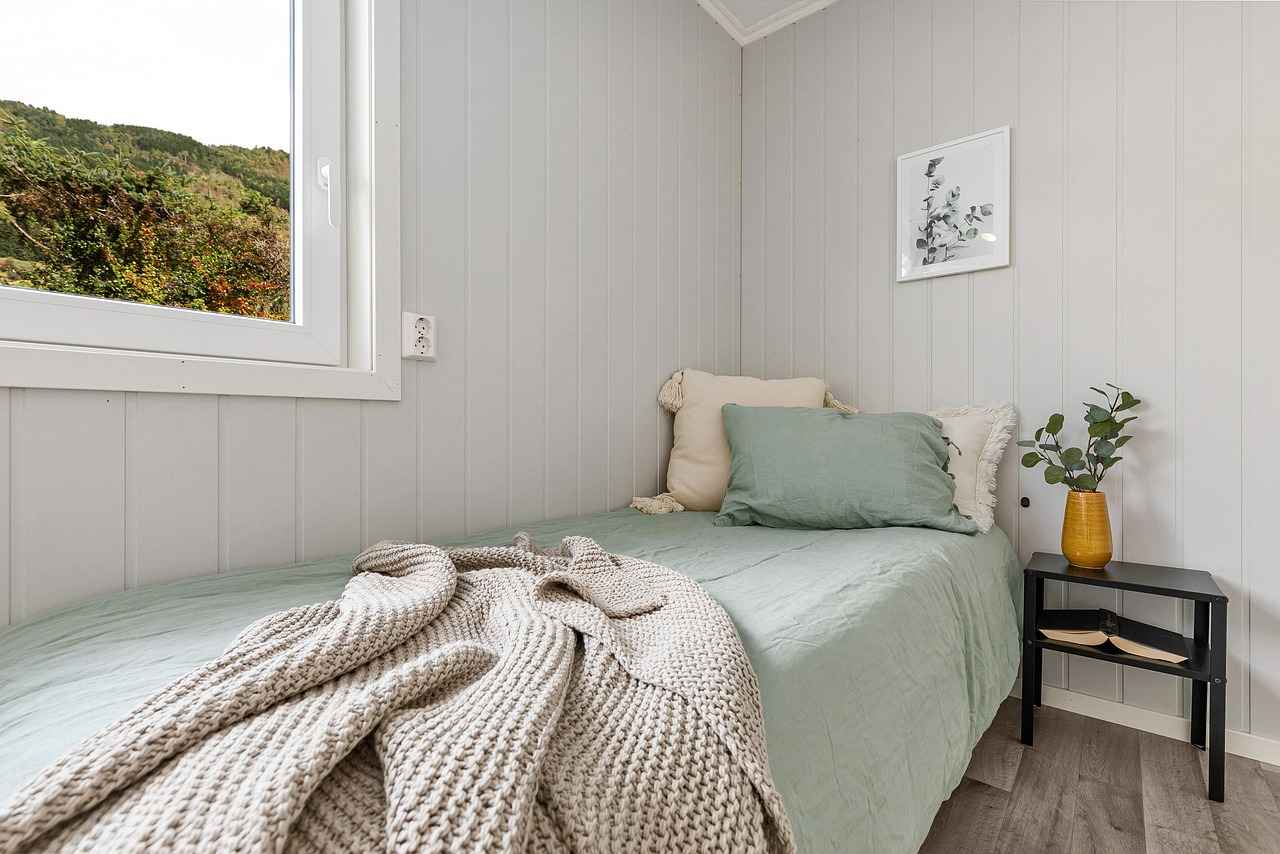
10. Color Psychology in Bed Backs
Color psychology plays an essential role in interior design, particularly in creating the desired mood in a bedroom. The choice of colors can significantly influence emotions and enhance the overall aesthetic of the space. Understanding how different colors affect our feelings can help you select the perfect hue for your bed back design.
When designing a bedroom, it’s crucial to consider how color can impact your daily life. For instance, calming colors such as soft blues and greens are known to promote relaxation and tranquility. These shades can help create a serene environment, making it easier to unwind after a long day. Incorporating these colors into your bed back design can evoke a sense of peace and comfort.
On the other hand, bold colors like vibrant reds and oranges can energize a space. These hues can stimulate creativity and enthusiasm, making them ideal for those who want to feel invigorated in their bedroom. When used thoughtfully in your bed back design, bold colors can serve as a striking focal point that draws attention and adds personality to the room.
Additionally, neutral colors such as whites, grays, and beiges offer versatility and can seamlessly blend with various design styles. These colors provide a calming backdrop, allowing other elements in the room to shine. By choosing a neutral bed back, you can create a timeless look that remains stylish over the years.
It’s also essential to consider the lighting in your bedroom, as it can alter how colors appear. Natural light can enhance the vibrancy of colors, while artificial lighting may soften them. Experimenting with different lighting options can help you achieve the desired effect for your bed back design.
In conclusion, the colors you choose for your bed back can profoundly affect the mood and overall design of your bedroom. By understanding the psychological impact of colors, you can create a space that reflects your personality while promoting the feelings you wish to evoke.
10.1. Calming Colors
Calming colors like blues and greens have the remarkable ability to create a serene and tranquil environment in any bedroom. These colors are not only visually appealing but also play a significant role in influencing our mood and overall well-being. When designing your bed back, understanding how to effectively use these calming hues can transform your space into a peaceful retreat.
When incorporating calming colors into your bed back design, consider the following:
- Color Selection: Choose shades of blue and green that resonate with your personal style. Soft pastels can evoke a gentle ambiance, while deeper hues can add richness and depth.
- Accent Pieces: Pair your calming bed back with accent pillows or throws in complementary colors to enhance the overall look. Consider using varying textures to add interest without overwhelming the senses.
- Natural Light: The effect of calming colors can be amplified by natural light. Position your bed back in a way that allows sunlight to enhance the colors, creating a warm and inviting atmosphere.
- Wall Treatments: If your bed back design includes wall treatments, consider painting the wall behind it in a soft blue or green. This not only frames the bed but also reinforces the calming effect.
- Artwork and Decor: Incorporate artwork or decor that features calming colors. This can tie the room together and create a cohesive look that promotes relaxation.
In conclusion, using calming colors like blues and greens in your bed back design can significantly enhance the serenity of your bedroom. By thoughtfully selecting shades that resonate with your personal style and incorporating them into various elements of your design, you can create a tranquil retreat that fosters relaxation and peace.
10.2. Bold Statements
Bold colors have the incredible ability to energize a space and create a vibrant atmosphere in any room, especially in bedrooms. When it comes to bed back designs, incorporating vibrant hues can make a striking statement that transforms the overall aesthetic. Here are some innovative ways to integrate bold colors into your bed back design.
- Accent Walls: One of the simplest ways to introduce bold colors is by creating an accent wall behind the bed. Choose a rich shade like deep blue or vibrant red to draw attention and create a focal point. This can be done with paint or wallpaper.
- Colorful Upholstered Headboards: Opt for an upholstered headboard in a bright fabric, such as emerald green or sunflower yellow. This not only adds color but also enhances comfort and style, making your bed a cozy retreat.
- Artistic Murals: Consider commissioning a mural that reflects your personality and interests. A colorful mural can serve as a unique bed back, adding depth and character to your bedroom.
- Layered Textiles: Use vibrant throws and cushions in bold colors to create a layered look on your bed. This approach allows you to experiment with different shades and patterns while keeping the overall design cohesive.
- Mix and Match: Don’t be afraid to mix different bold colors together. Pairing bright colors with neutral tones can create a balanced look that feels lively yet sophisticated.
Incorporating bold colors into your bed back design not only enlivens the space but also reflects your personal style. Whether through paint, textiles, or artwork, vibrant hues can create a striking effect that energizes your bedroom and makes it a true sanctuary.
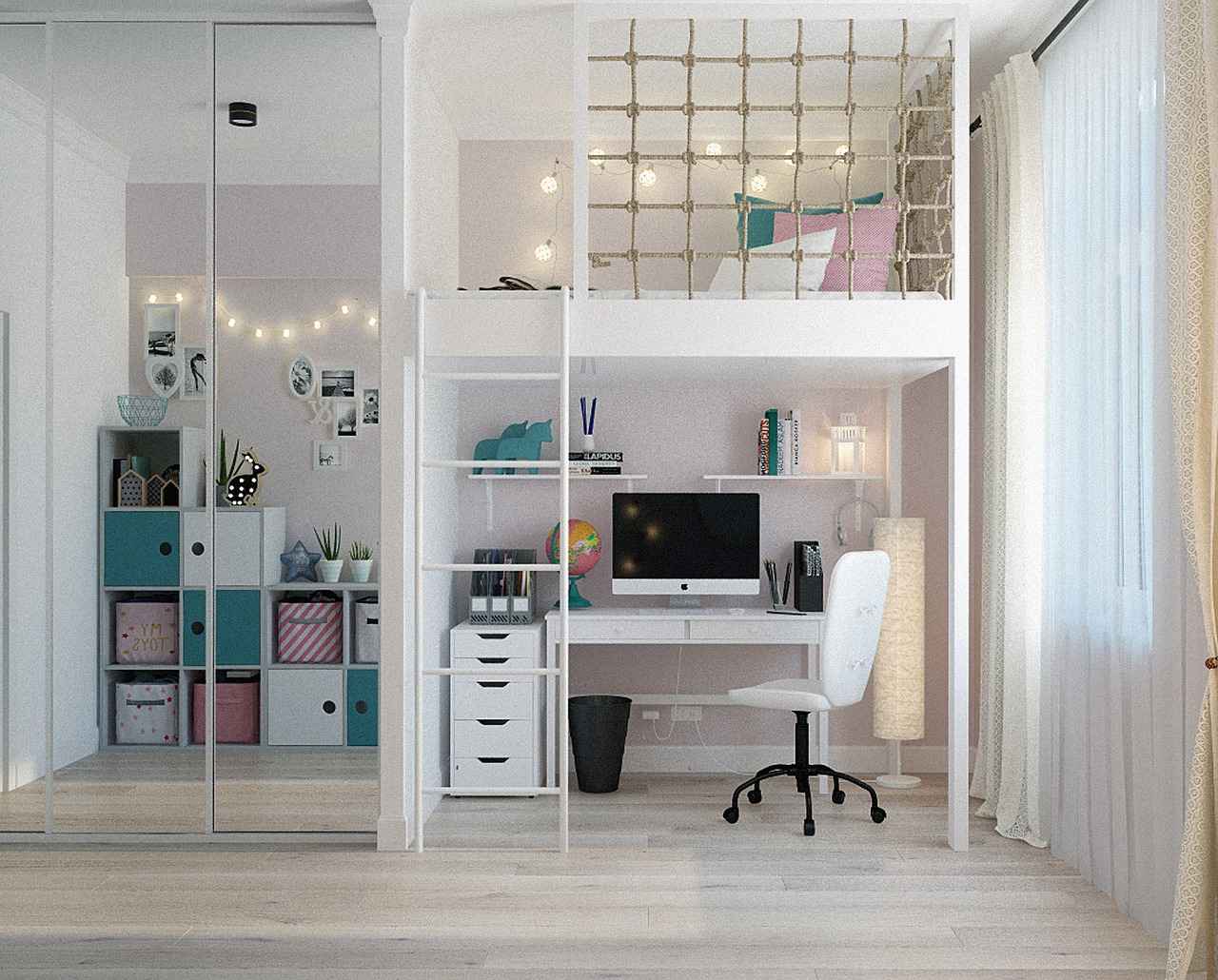
11. Textured Bed Backs
Texture adds depth and interest to bedroom designs, making them more visually appealing and inviting. In this section, we will explore various textured materials that can enhance the aesthetic of your bed back, transforming it into a stunning focal point.
When considering textured bed backs, it’s essential to understand the different materials available. Each material brings its own character and charm to the space:
- Fabrics: Upholstered bed backs can be made from various fabrics such as velvet, linen, and cotton blends. Velvet offers a luxurious feel, while linen provides a more casual and breathable option.
- Wood: Textured wood panels can create a rustic or modern look, depending on the finish. Options like reclaimed wood or distressed finishes add warmth and a sense of history.
- Metal: Incorporating metal elements can introduce an industrial vibe. Textured metals, such as brushed aluminum or wrought iron, can contrast beautifully with softer materials.
- Wall Treatments: Textured paint techniques, such as sponging or rag rolling, can create unique patterns and finishes that add depth to your bed back.
Layering textures is another effective way to enhance your bed back design. Combining different materials, such as a wooden panel with a fabric headboard, creates a rich, dynamic look that draws the eye. Additionally, consider the color palette when layering textures. Harmonious colors can elevate the overall design, while contrasting colors can make a bold statement.
Incorporating greenery or natural elements can also enhance texture. A vertical garden or strategically placed plants can add life and freshness to your bedroom, complementing the textured materials used in your bed back.
Ultimately, the right combination of textures can transform your bedroom into a sanctuary that reflects your personal style and enhances your comfort.
11.1. Layering Textures
Layering different textures in interior design is a powerful technique that can create a rich, dynamic look in any space, especially in modern bedrooms. By effectively combining various materials, you can achieve a cohesive design that enhances both aesthetics and comfort.
To successfully layer textures, it’s essential to consider the following elements:
- Material Variety: Incorporate a mix of materials such as wood, fabric, metal, and natural elements. For example, pairing a soft upholstered headboard with a rustic wooden backdrop can create a stunning contrast.
- Color Coordination: Choose textures that not only vary in feel but also complement each other in color. Neutral tones can serve as a base, while pops of color in textured accessories can add visual interest.
- Layering Techniques: Use layering techniques such as draping throws over the bed, adding patterned cushions, or incorporating a textured rug beneath the bed. Each layer should contribute to the overall harmony of the room.
- Balance and Scale: Ensure that the textures you choose are balanced in scale. For instance, if you have a large, chunky knit throw, pair it with smaller, more delicate decorative pillows to maintain visual balance.
When layering textures, it’s also vital to consider the functionality of each element. Textured items should not only look good but also serve a purpose, whether it be warmth, comfort, or style. This approach will help create a bedroom that is not only visually appealing but also inviting and practical.
In conclusion, layering different textures is an art that can significantly elevate the design of your bedroom. By thoughtfully combining materials, colors, and styles, you can achieve a cohesive and dynamic look that reflects your personal taste.
11.2. Textured Paint Techniques
Textured paint techniques are an innovative way to elevate the visual appeal of your bedroom, especially around the bed back area. By employing various methods, you can create stunning effects that add depth and character to your walls. Here, we explore several popular techniques that can transform your space.
- Sponging: This technique involves using a sponge to apply a second color over a base coat, creating a soft, textured look. It’s perfect for adding a subtle depth to your walls.
- Rag Rolling: Similar to sponging, rag rolling uses a rag to roll on a glaze over a base coat. This method can produce a more pronounced texture that adds a unique character to your bed back.
- Stucco Finish: For a more dramatic effect, consider a stucco finish. This technique gives walls a three-dimensional texture, reminiscent of Mediterranean architecture, perfect for a cozy bedroom vibe.
- Brushed Pearl: This method involves using a brush to apply a pearlescent glaze over a base coat. The result is a shimmering finish that can make your bed back area feel luxurious and inviting.
- Ombre Effect: The ombre technique blends two or more colors from light to dark. This gradient effect can create a soothing backdrop for your bed, enhancing the overall ambiance of the room.
When choosing a textured paint technique, consider the overall theme of your bedroom. For instance, a rustic style may benefit from a stucco finish, while a modern aesthetic could shine with a brushed pearl effect. Additionally, always test your chosen technique on a small area first to ensure that it aligns with your vision.
Incorporating textured paint techniques not only enhances the beauty of your bed back but also adds a personal touch to your bedroom decor. With these methods, you can create a visually stunning space that reflects your unique style and taste.
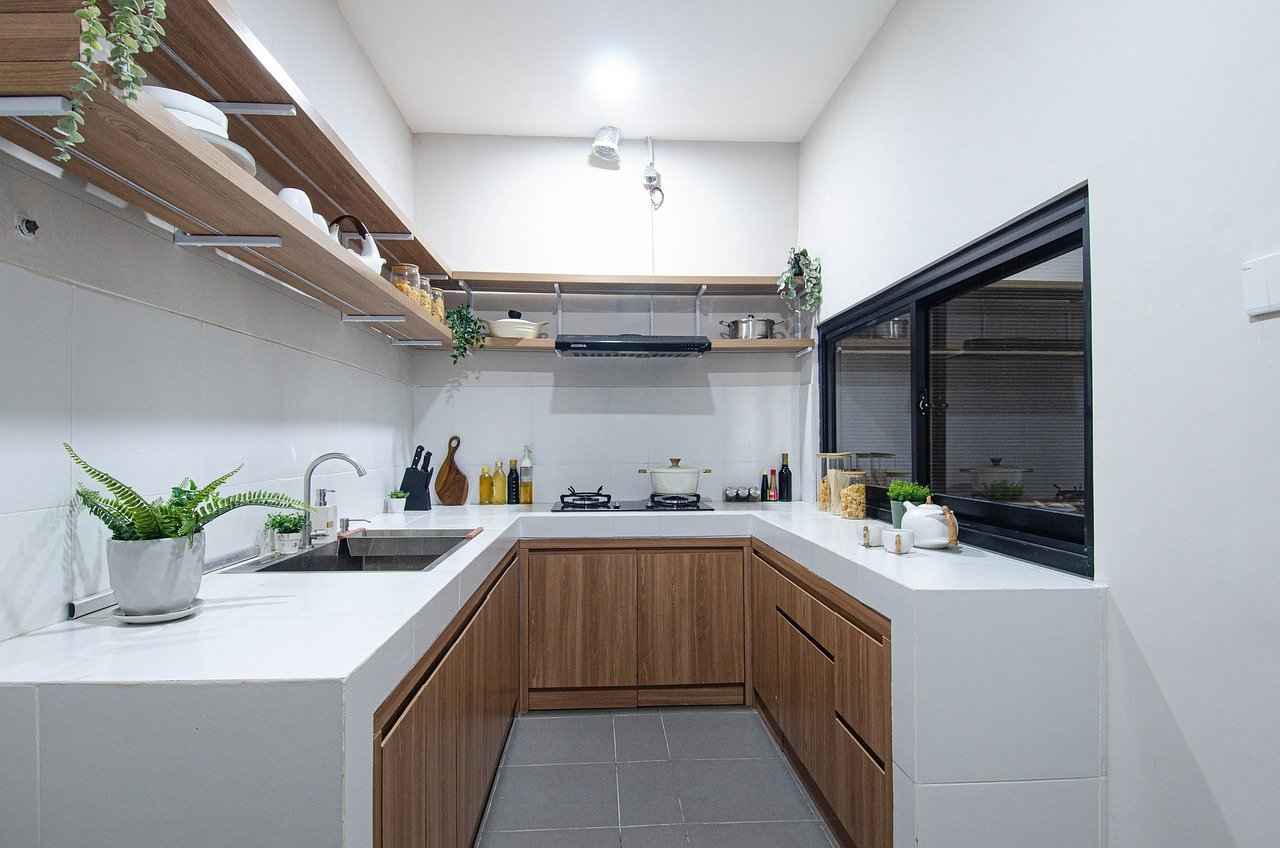
12. Conclusion: Choosing the Right Bed Back Design
Choosing the right bed back design is an essential step in creating a harmonious and stylish bedroom. Personal style, functionality, and room aesthetics all play a crucial role in this decision-making process. Here are some key considerations to help you select the perfect bed back design that resonates with your taste and enhances your living space.
- Reflect on Your Personal Style: Consider what styles resonate with you. Do you prefer a minimalist look, or are you drawn to more ornate designs? Your bed back should reflect your unique personality and preferences.
- Assess Functionality: Think about how you use your bedroom. If you enjoy reading in bed, a padded or upholstered bed back may provide the comfort you need. Alternatively, if you have limited space, a floating shelf design could be both practical and stylish.
- Choose Complementary Colors: The color of your bed back can significantly influence the overall mood of your bedroom. Opt for hues that either complement or contrast with your existing decor to create a cohesive look.
- Incorporate Texture: Adding texture to your bed back can enhance visual interest. Consider materials like wood, fabric, or metal to create a multi-dimensional effect that draws the eye.
- Think About Scale: The size of your bed back should be proportionate to your bed and the room. A large, bold design can serve as a statement piece, while a more subtle option might blend seamlessly into the background.
Ultimately, the goal is to create a modern bedroom that not only looks great but also feels comfortable and inviting. By reflecting on these ideas and considering your personal style, you can choose a bed back design that truly resonates with you.
Frequently Asked Questions
- What are the benefits of a minimalist headboard?
Minimalist headboards emphasize simplicity and functionality, creating a clean look that enhances the overall aesthetic of modern bedrooms. They provide comfort and support without overwhelming the space.
- How do I choose the right fabric for an upholstered bed back?
Choosing the right fabric is crucial for your upholstered bed back. Consider options like velvet for elegance and warmth, or linen for a more casual feel. Think about how each fabric complements your bedroom’s theme.
- Can I use floating shelves as a bed back?
Absolutely! Floating shelves can serve as stylish bed backs while providing functional storage. You can arrange them creatively behind your bed for an eye-catching focal point.
- What types of wall art work best as a bed back?
Using wall art as a bed back creates a unique focal point. Consider various types such as paintings, prints, or even photographs that complement your bedroom’s theme and color palette.
- How do I incorporate greenery into my bed back design?
Incorporating plants can enhance the tranquility of your bedroom. Choose low-light plants that thrive indoors, or consider creating a vertical garden as a stunning bed back feature.
- What should I consider when customizing a bed back?
When customizing a bed back, think about your personal style and preferences. Collaborate with designers to bring your vision to life while keeping budget considerations in mind.
- How can I make my bed back design sustainable?
Sustainability is key! Use recycled materials and eco-friendly fabrics like organic cotton or bamboo to create a beautiful and environmentally friendly bed back design.
- What role does color play in bed back design?
Color influences the mood of your bedroom. Calming colors like blues and greens can create serenity, while bold colors can energize the space. Choose wisely to enhance your overall design.
